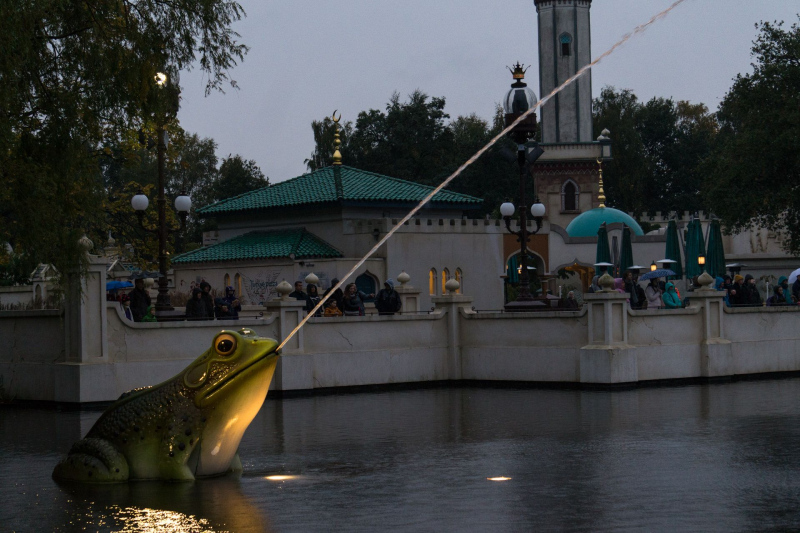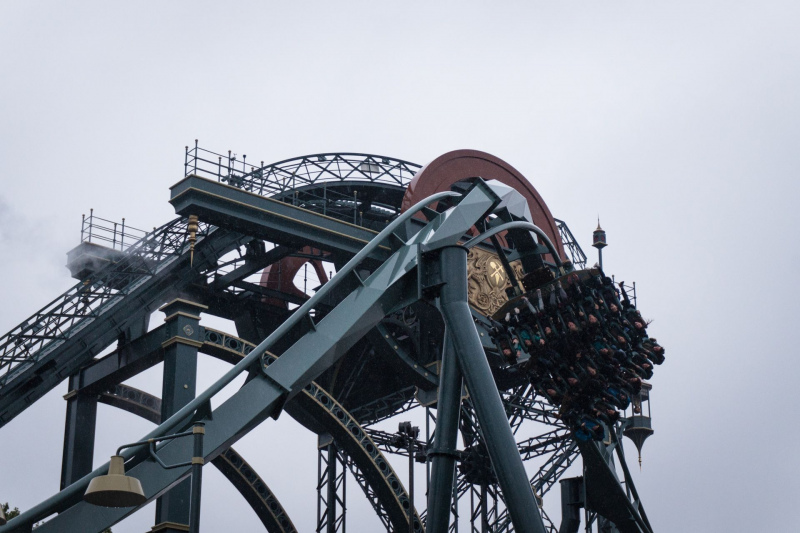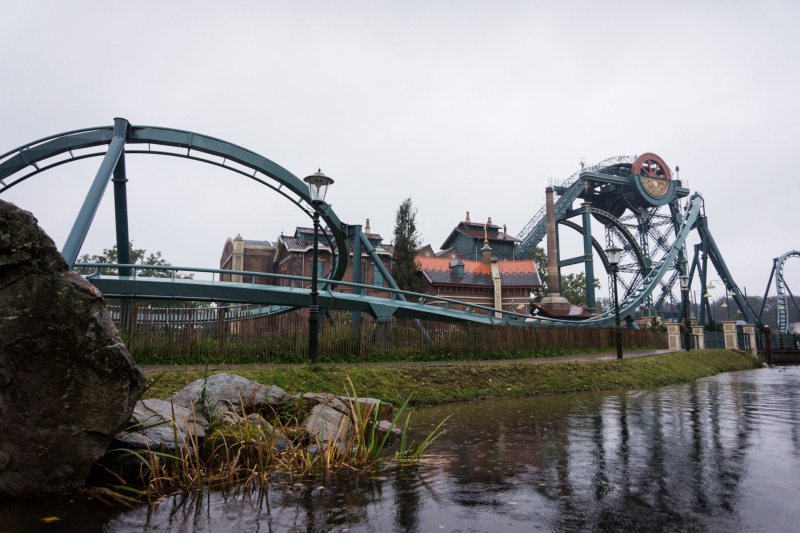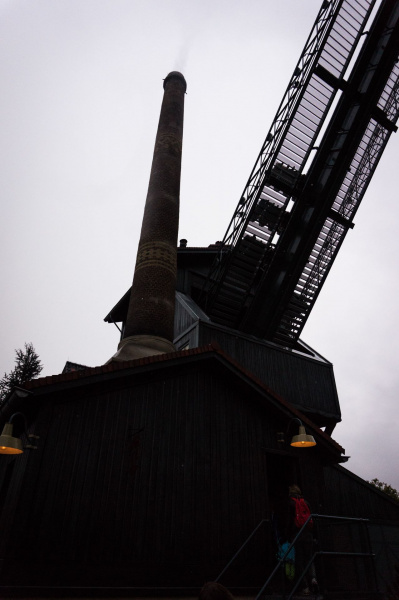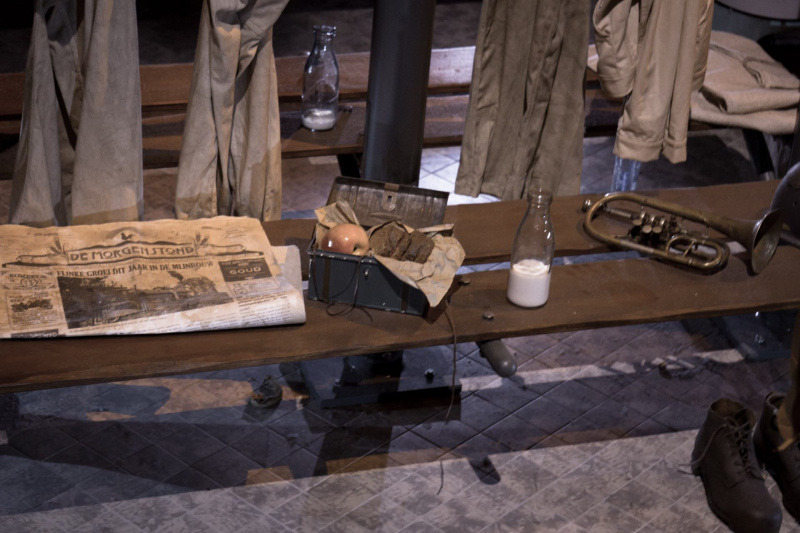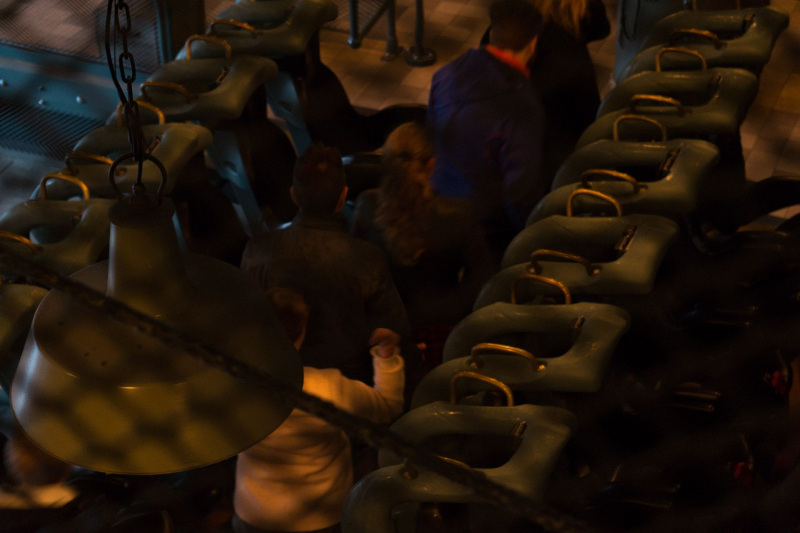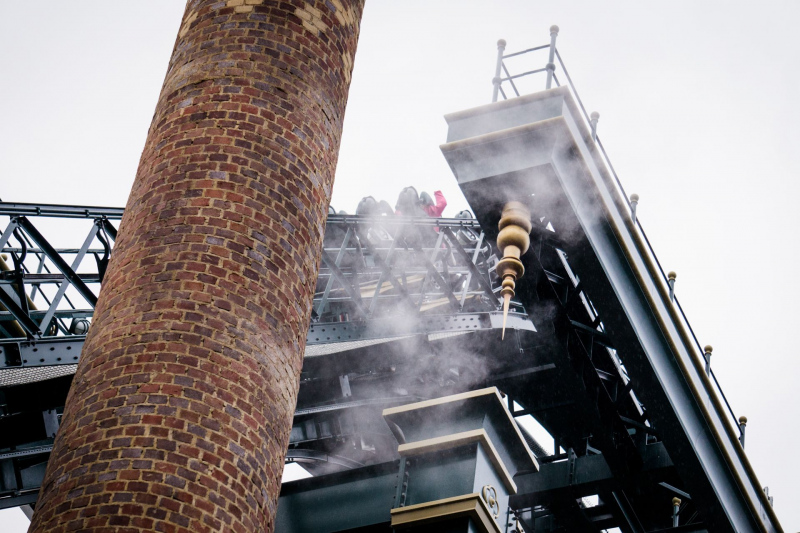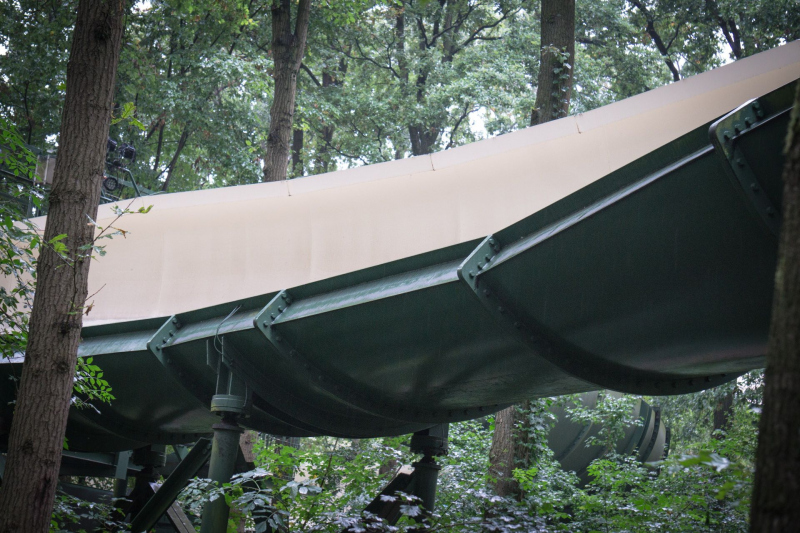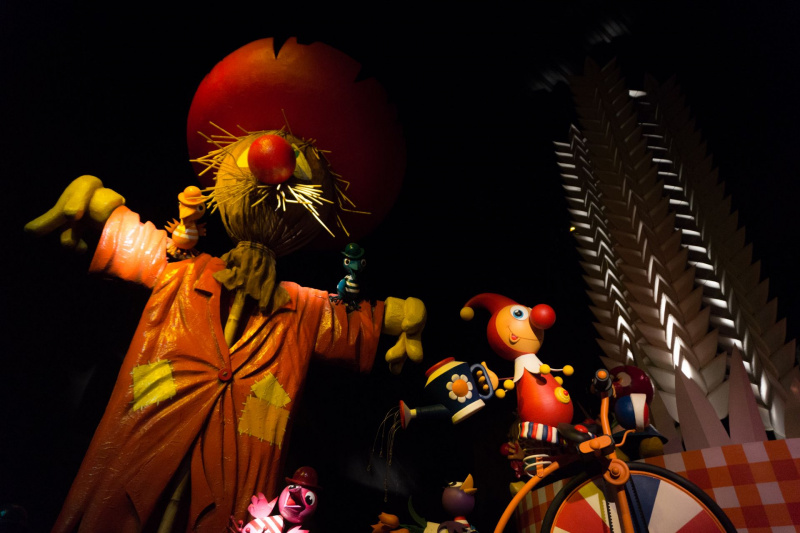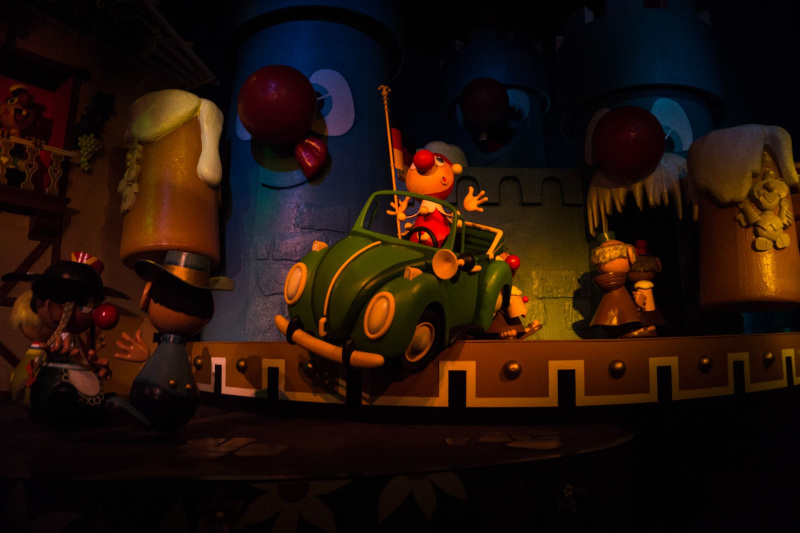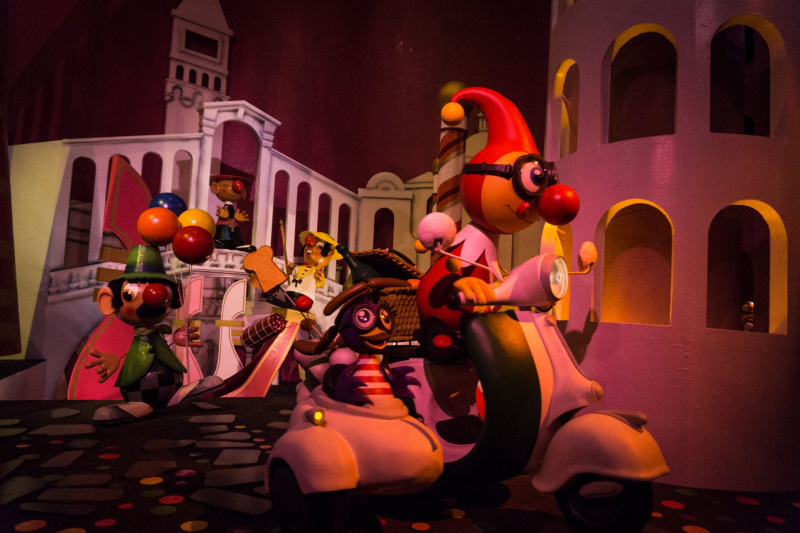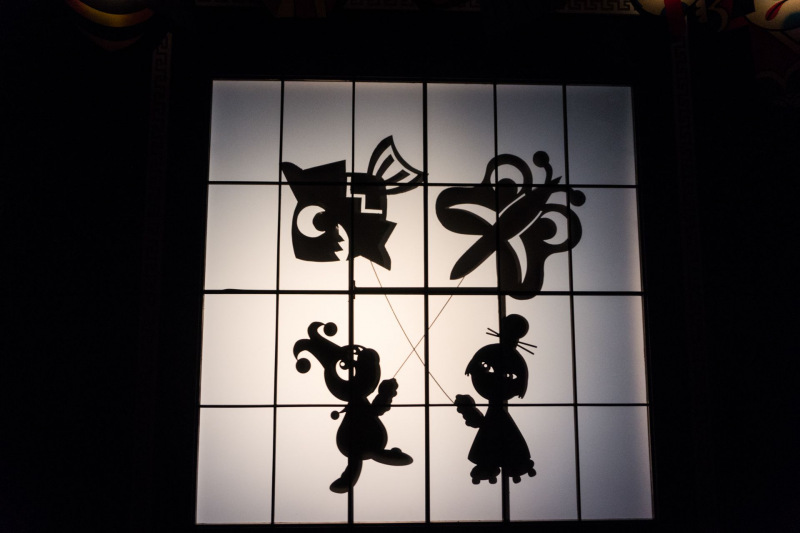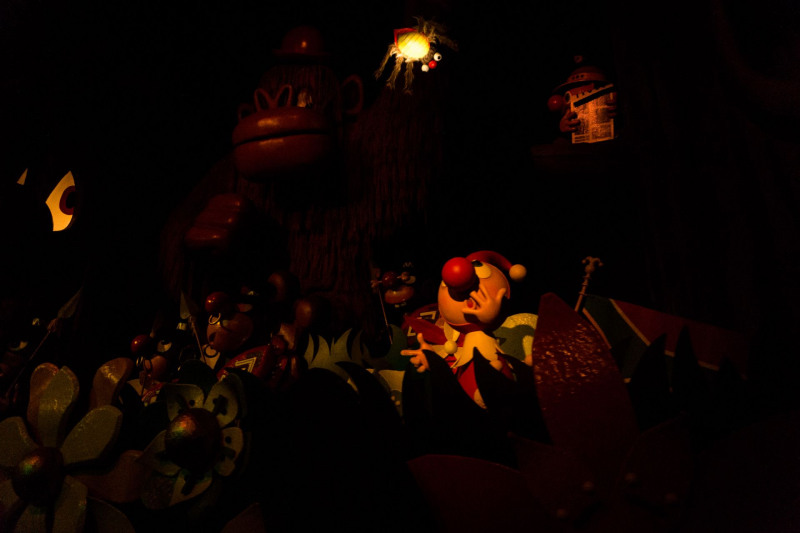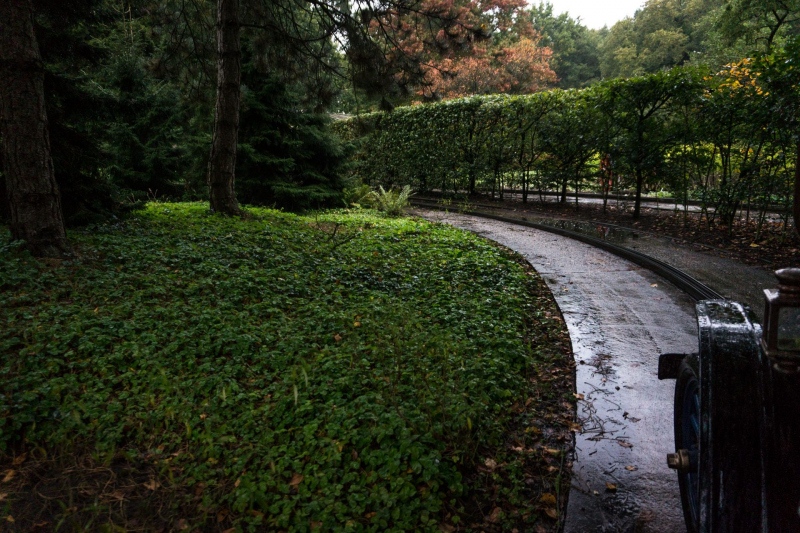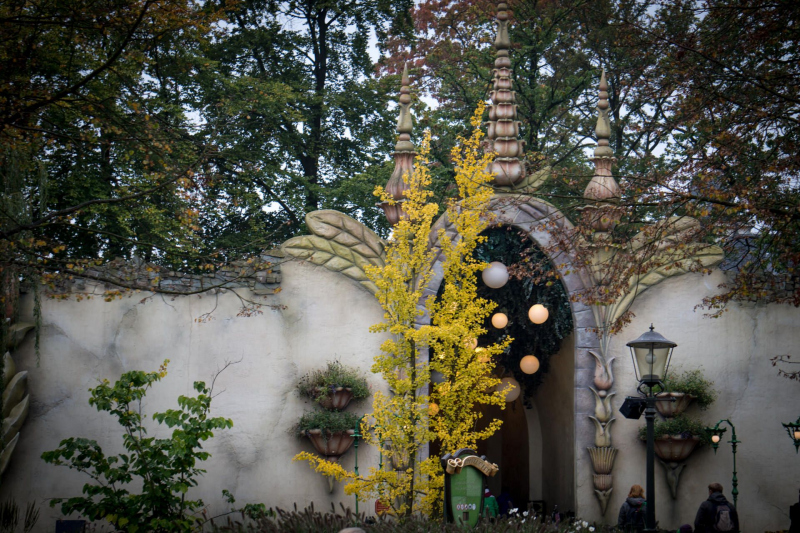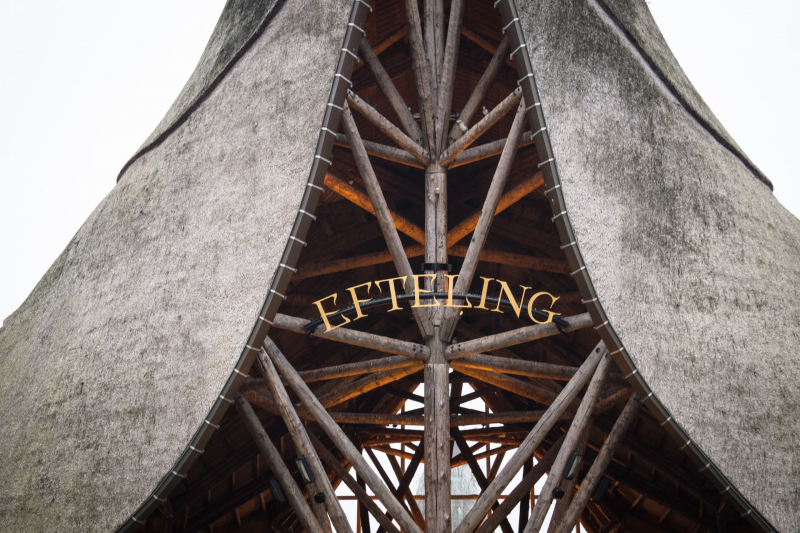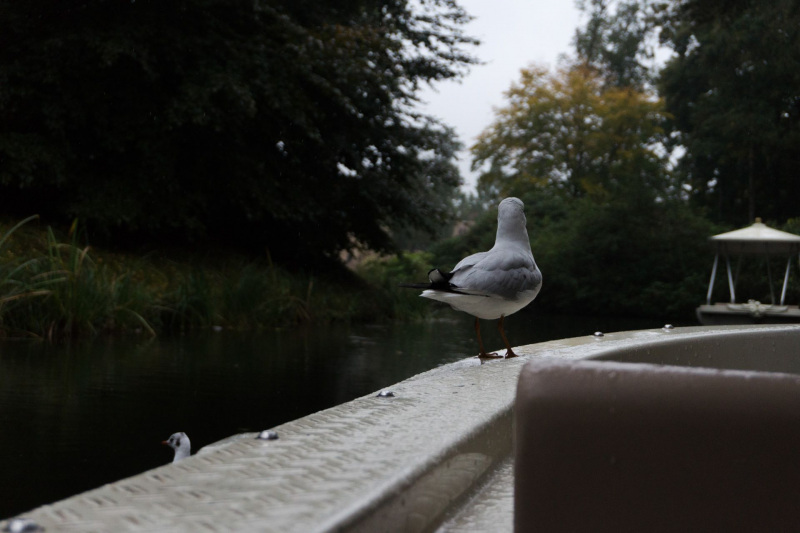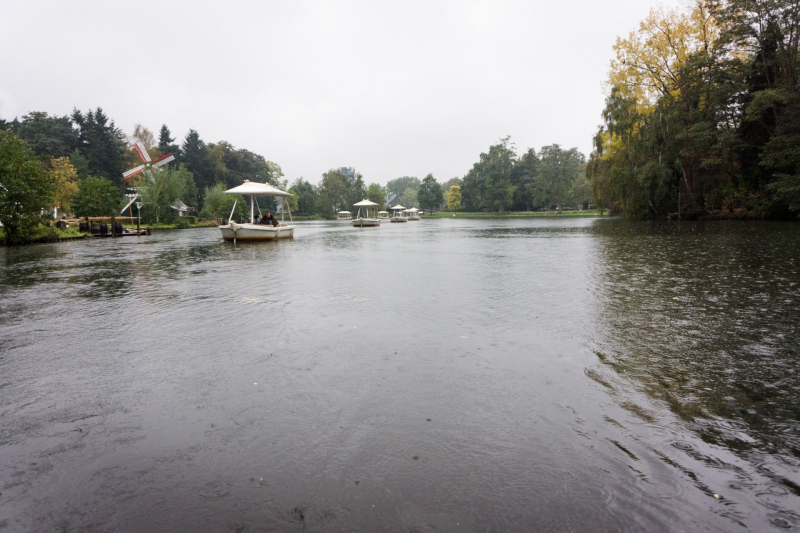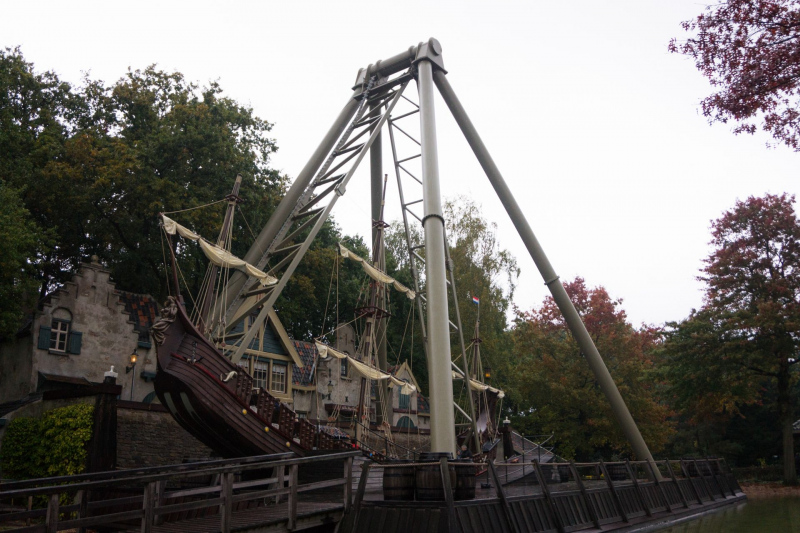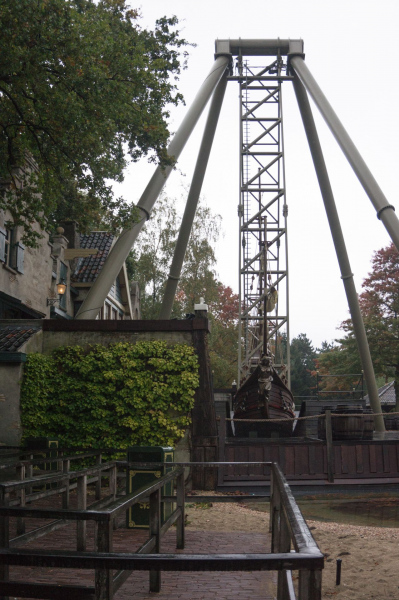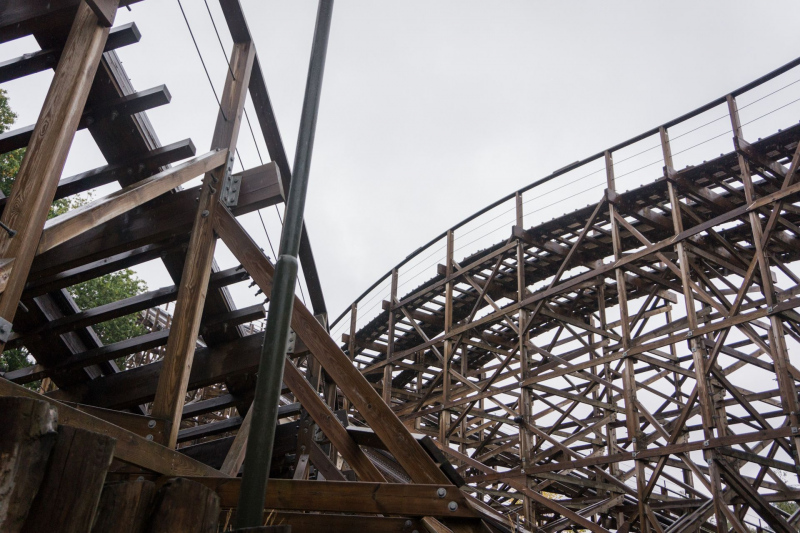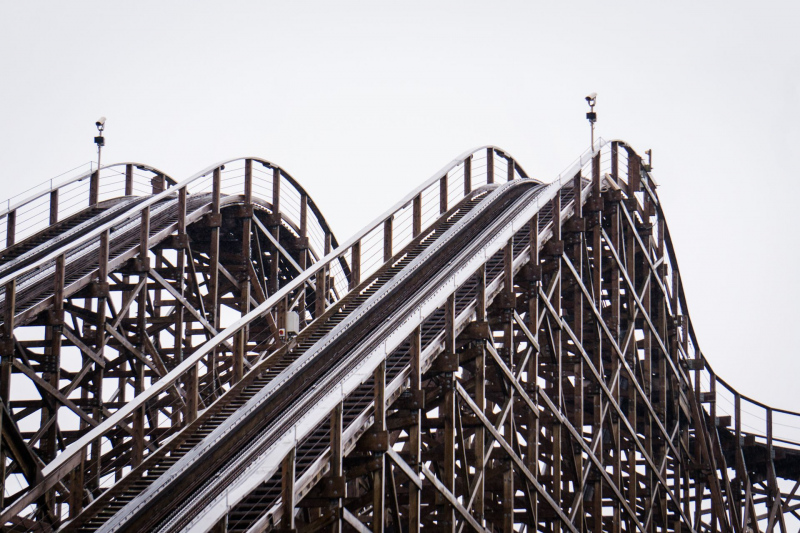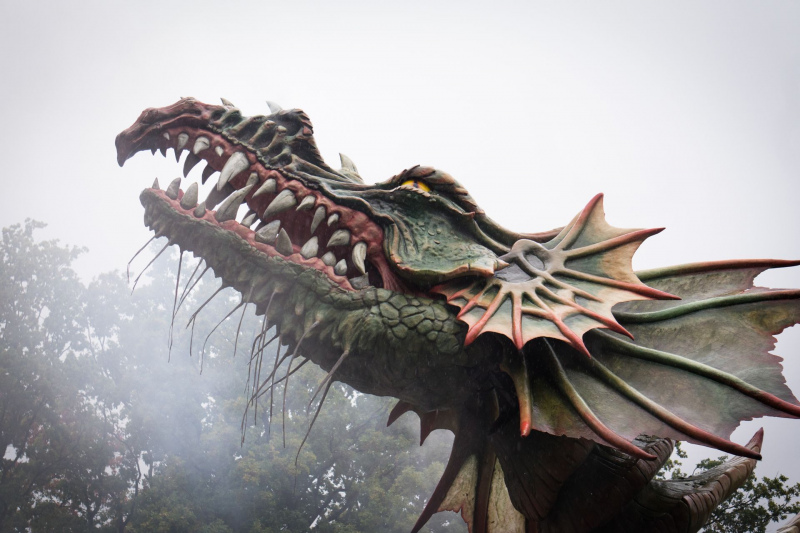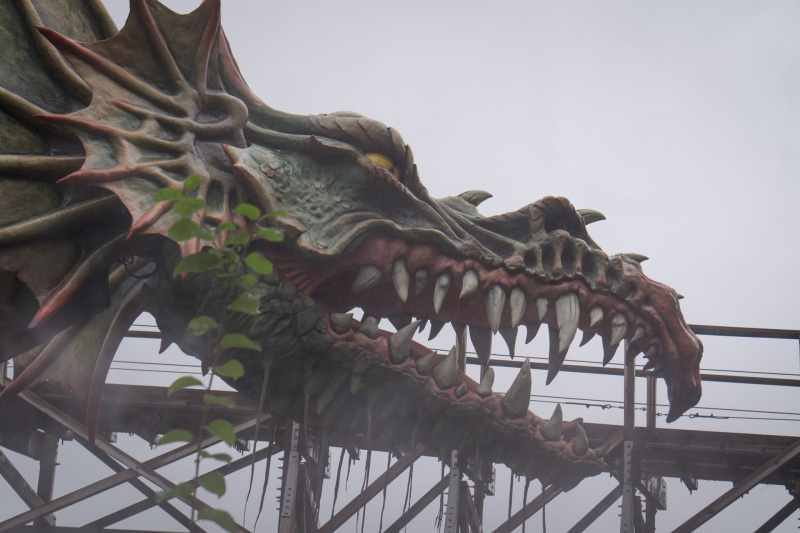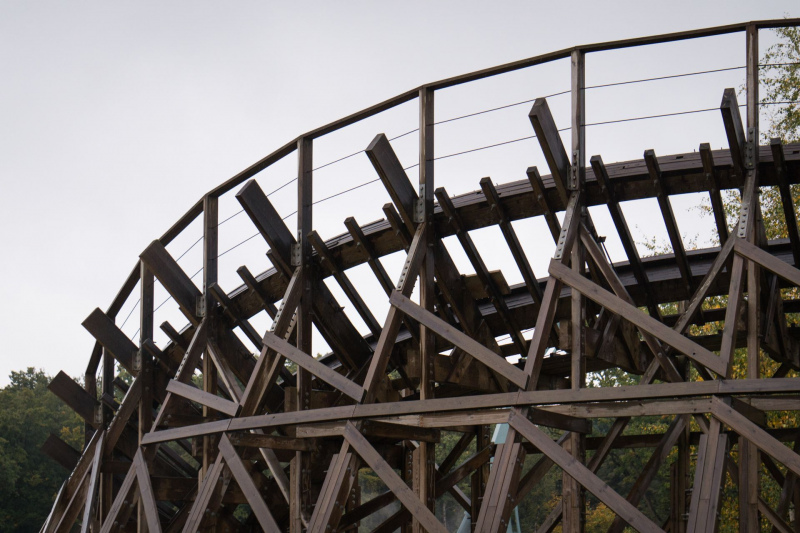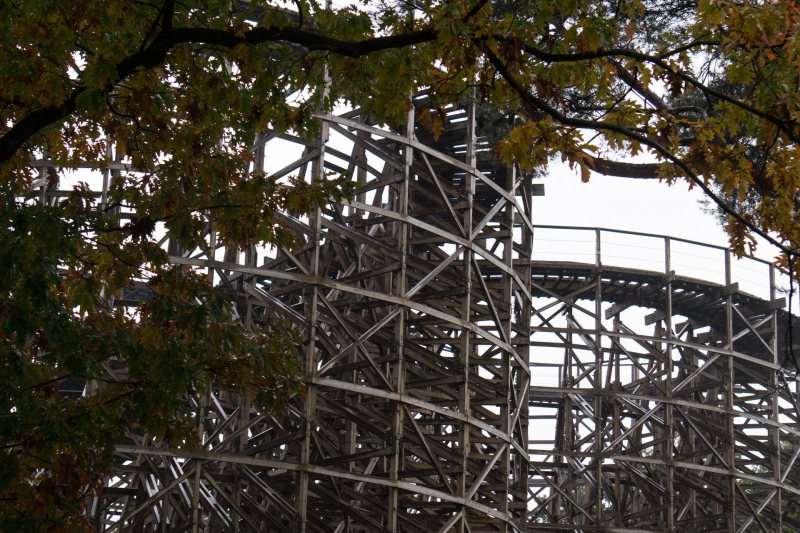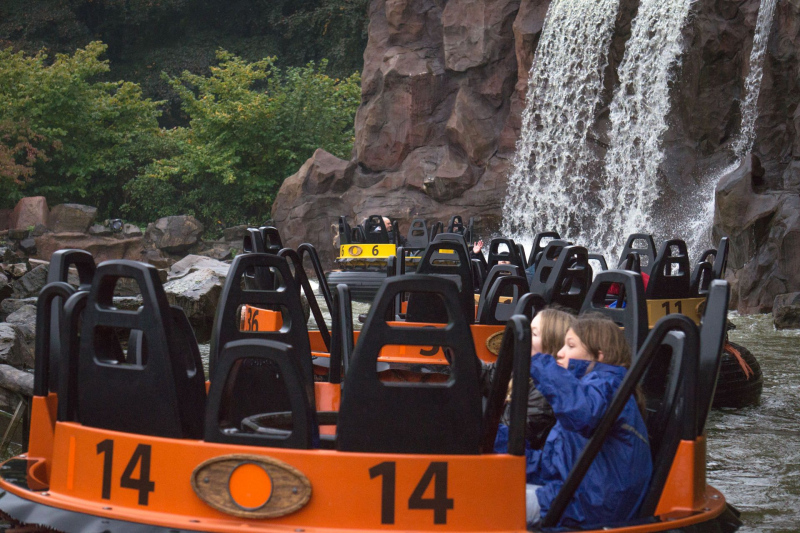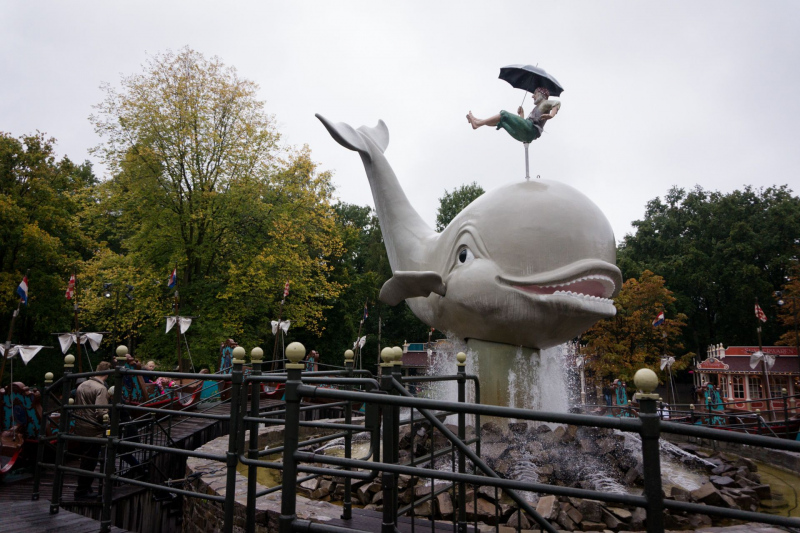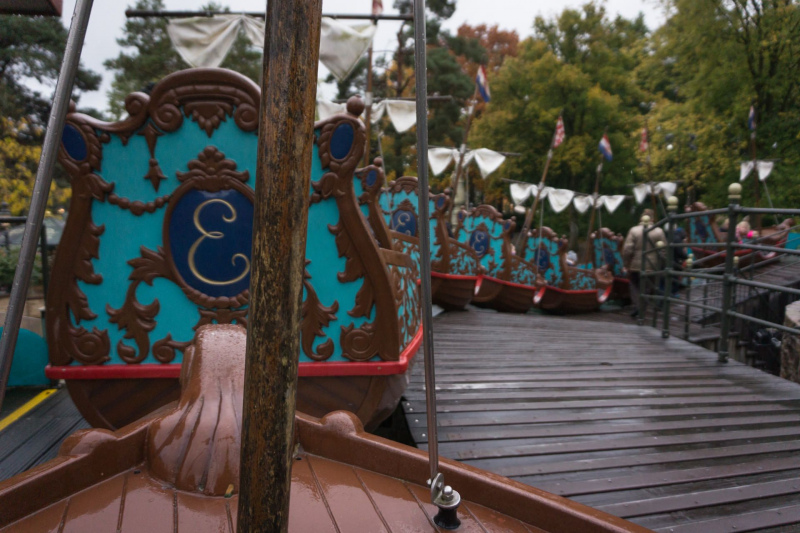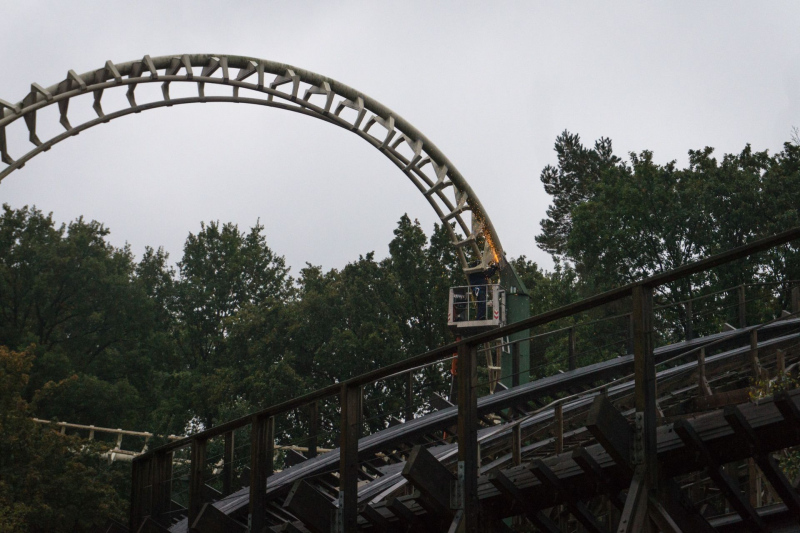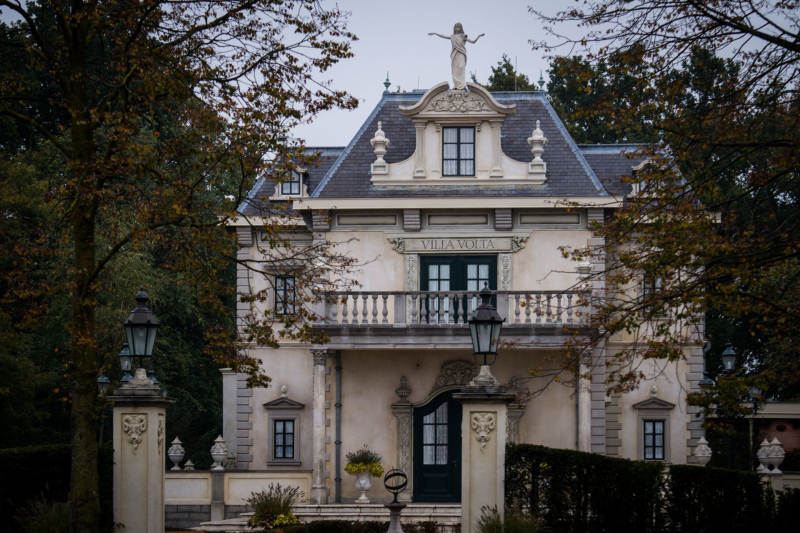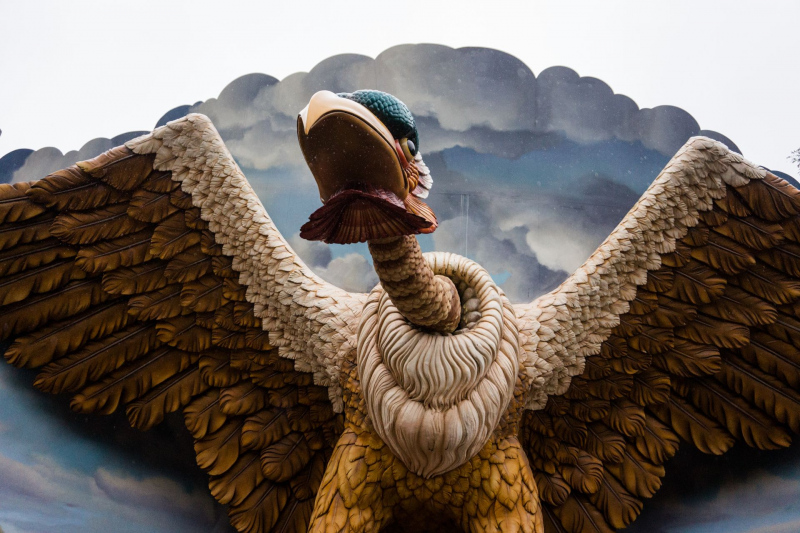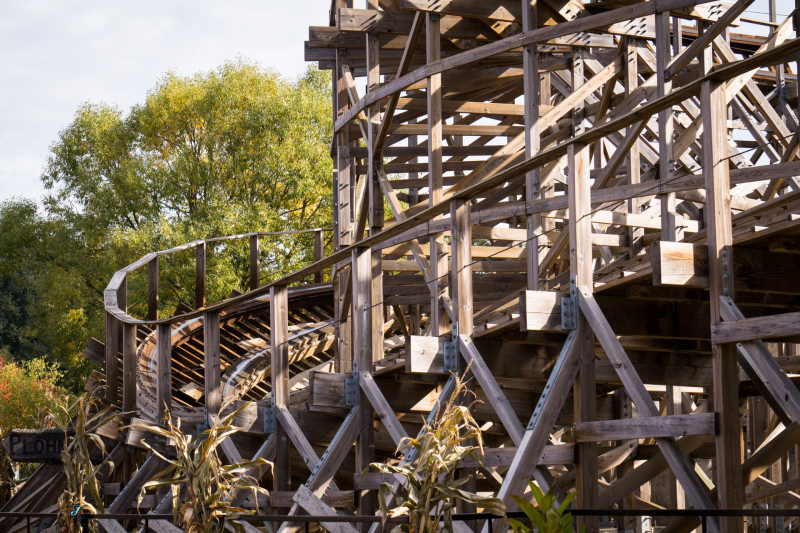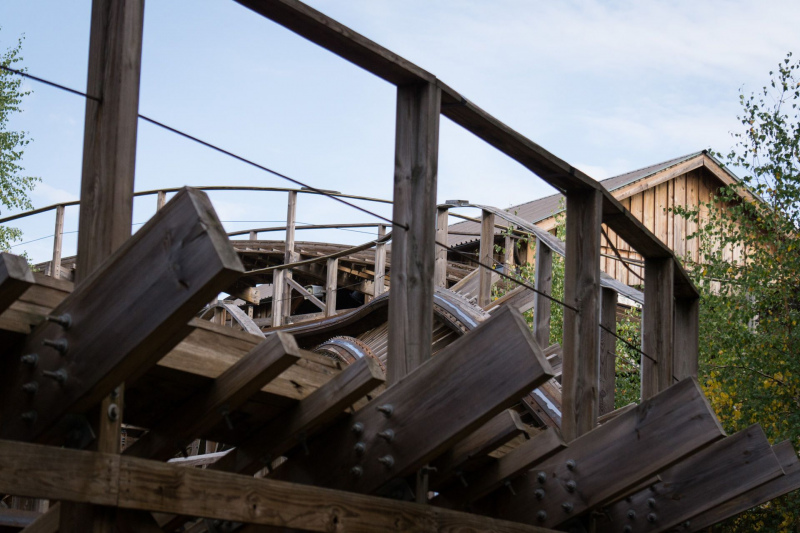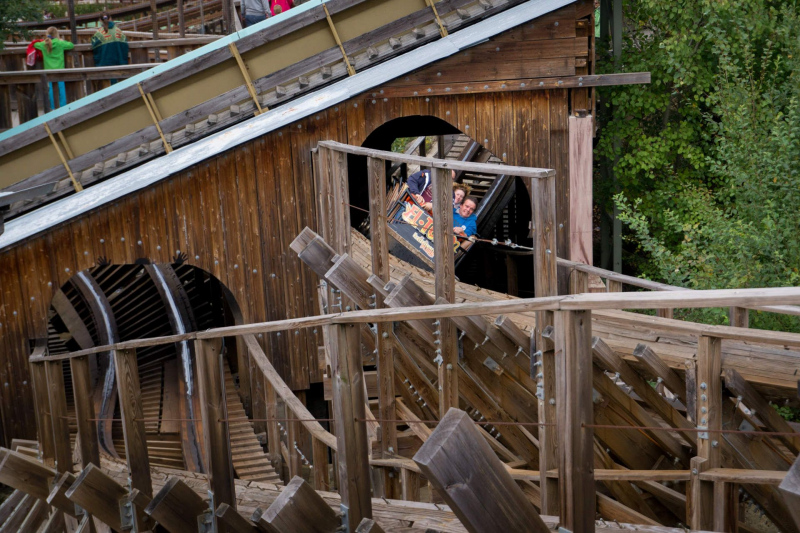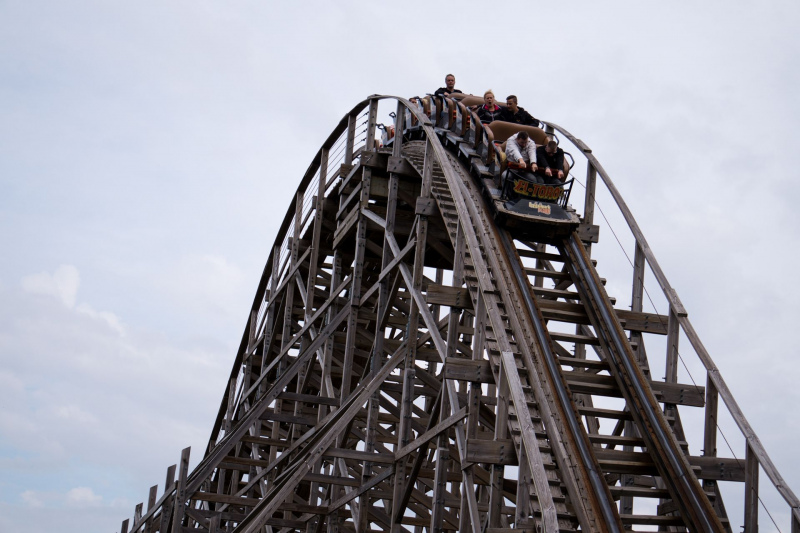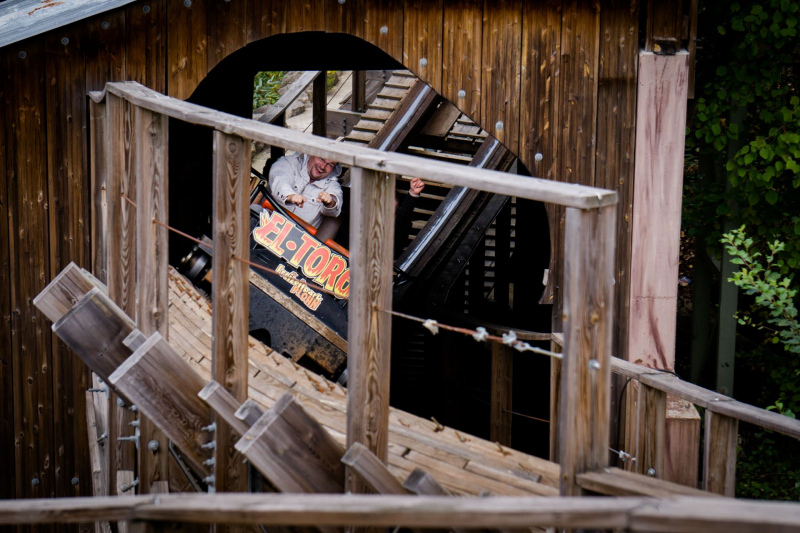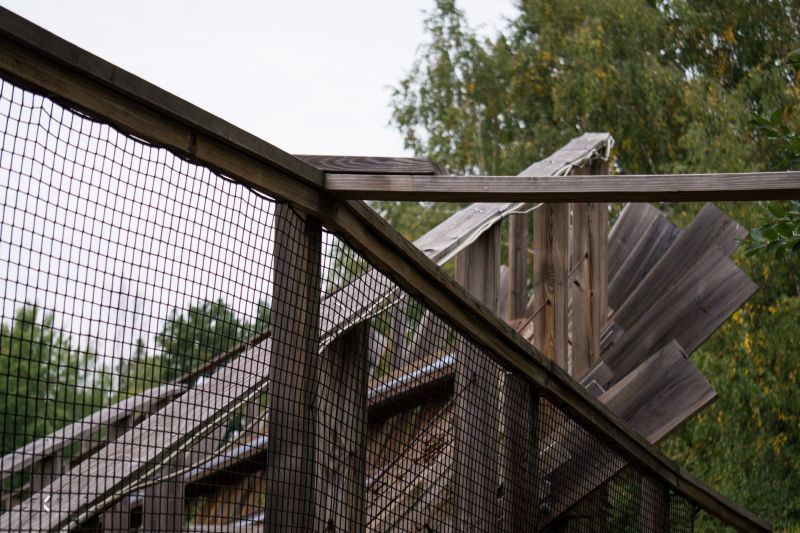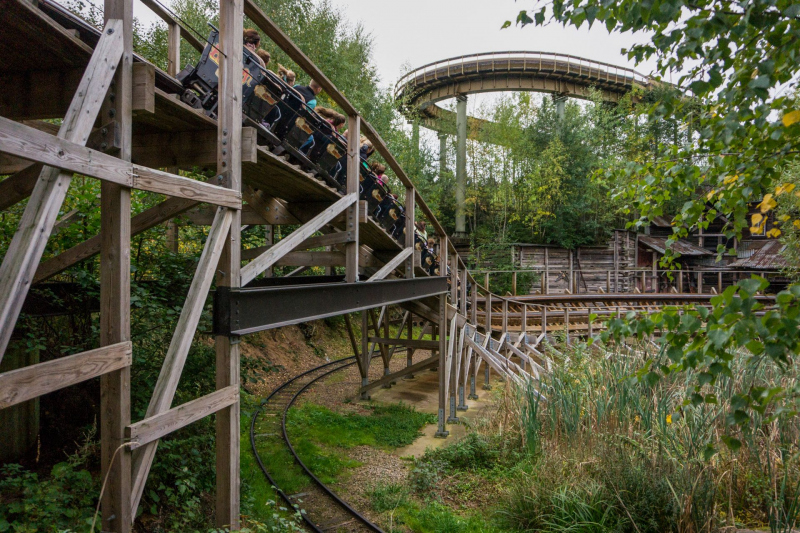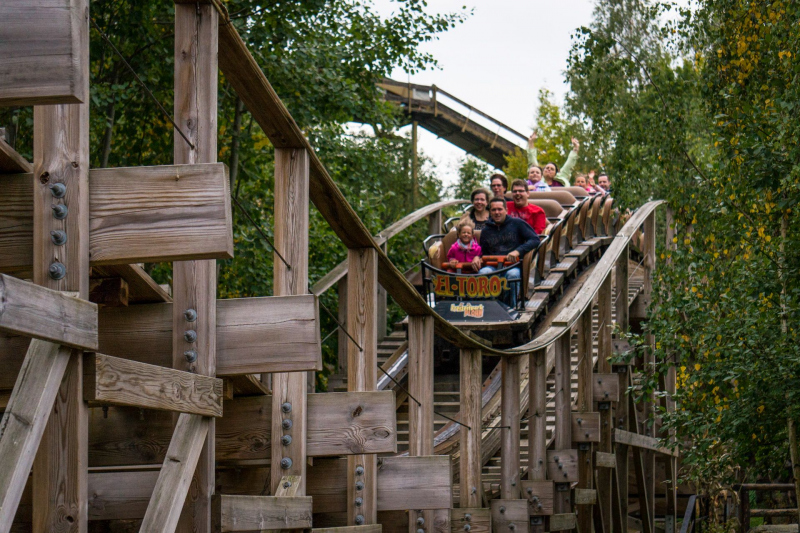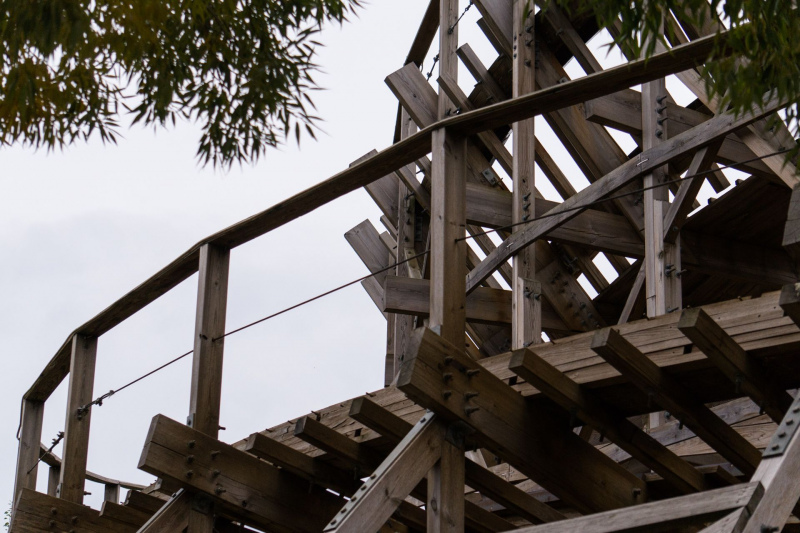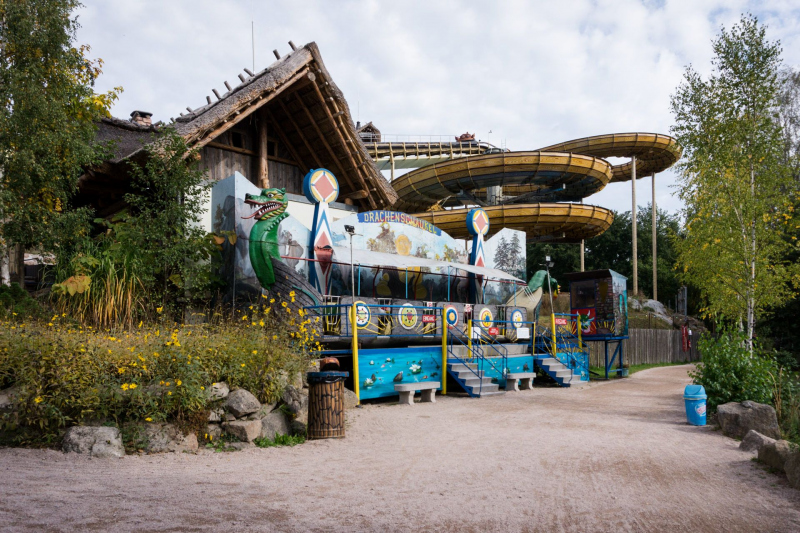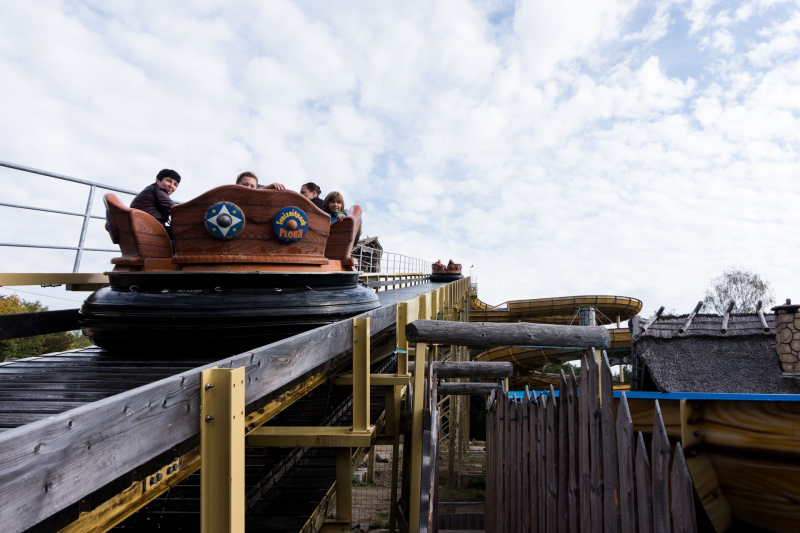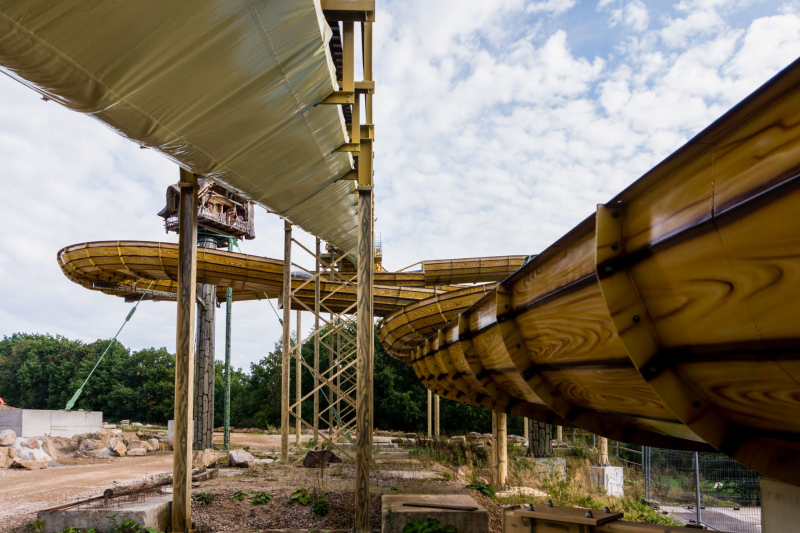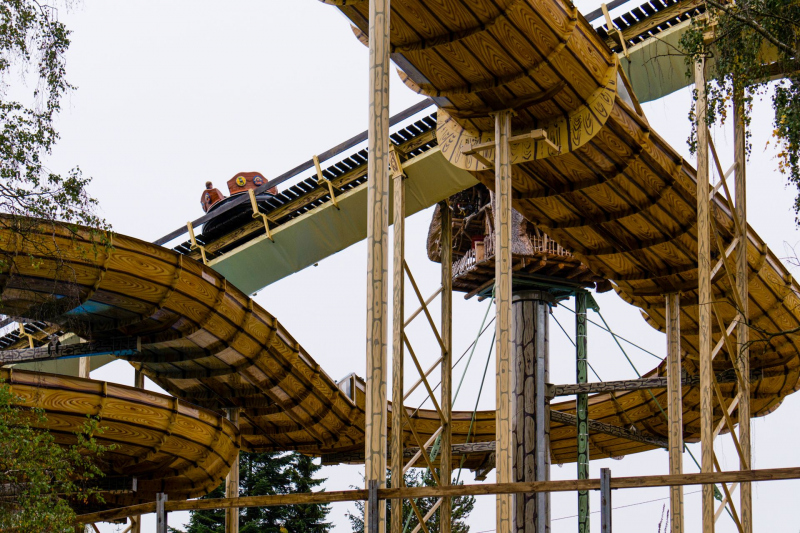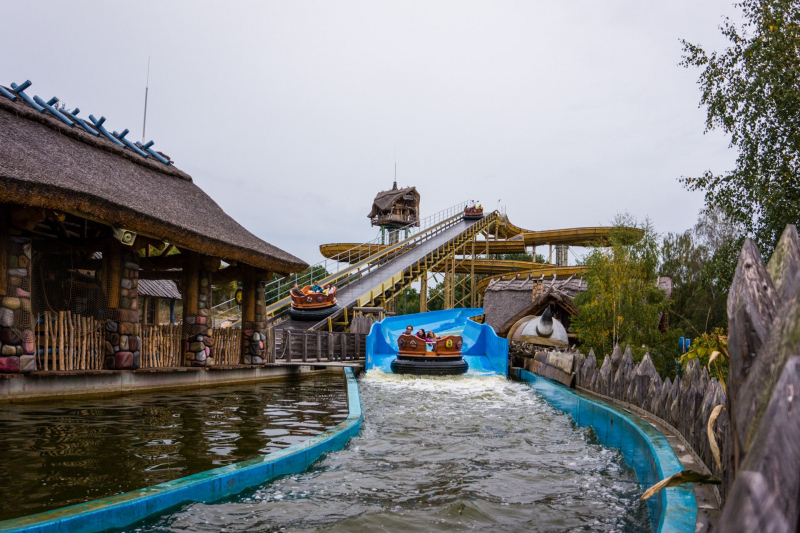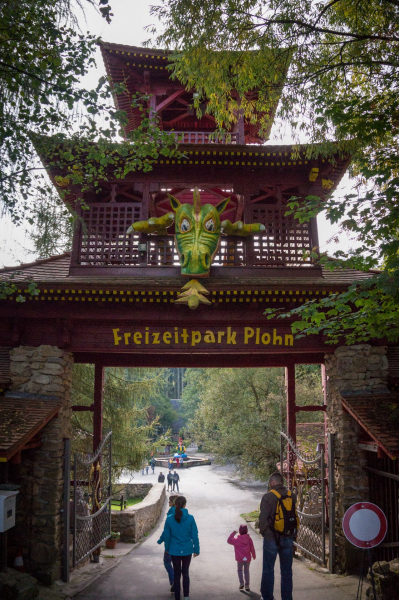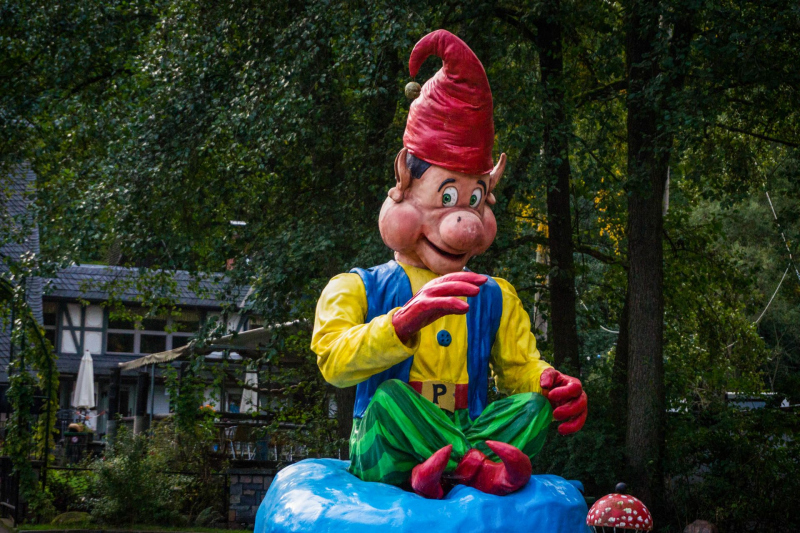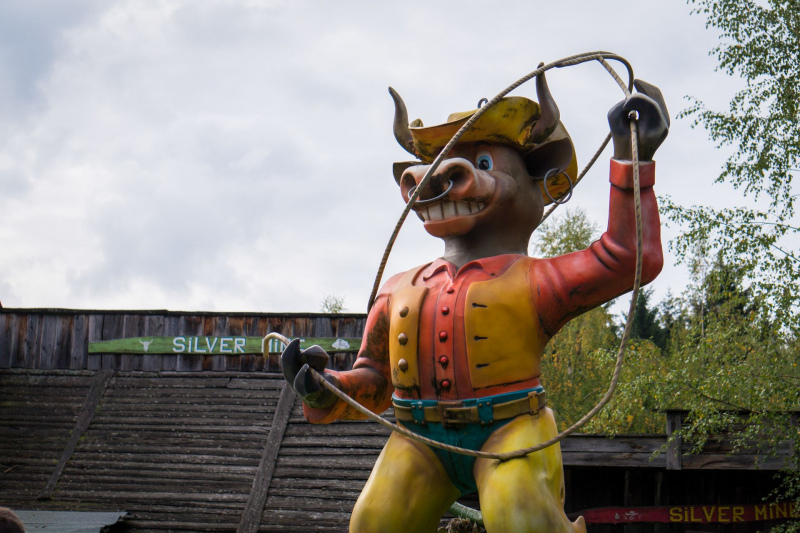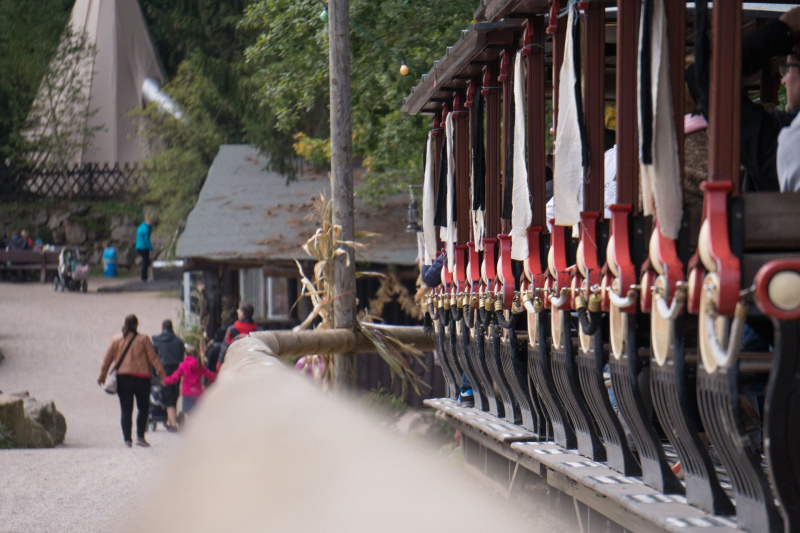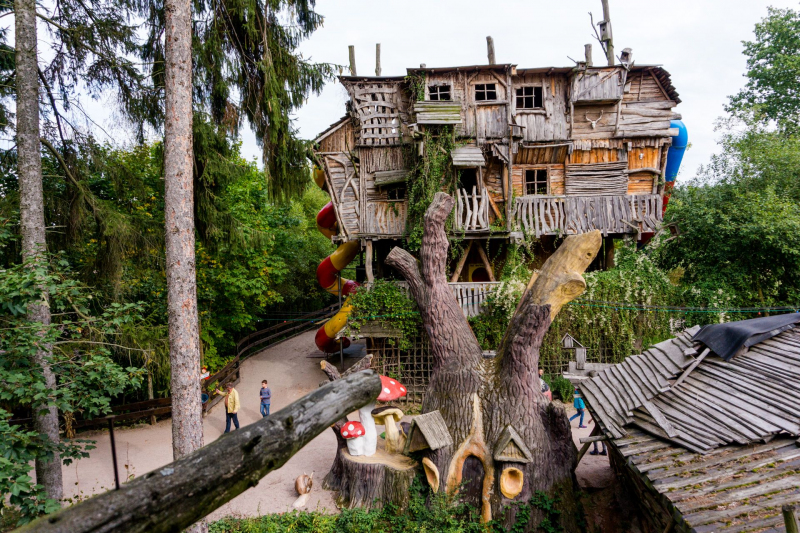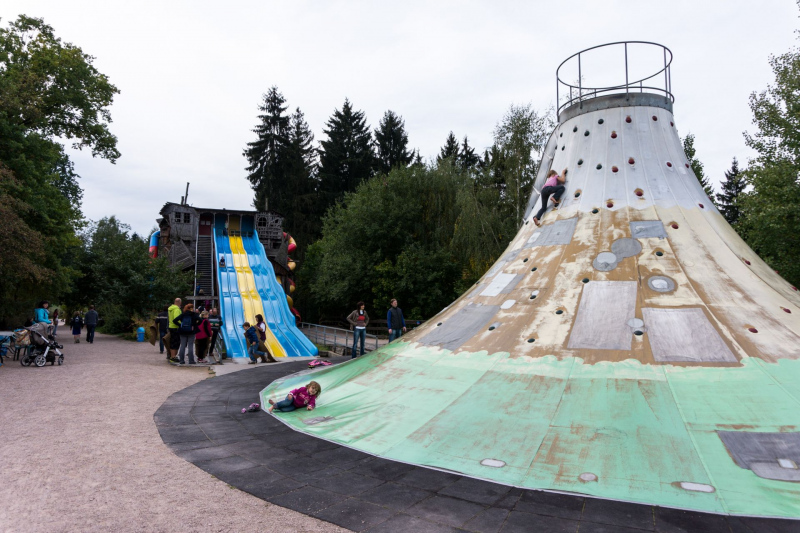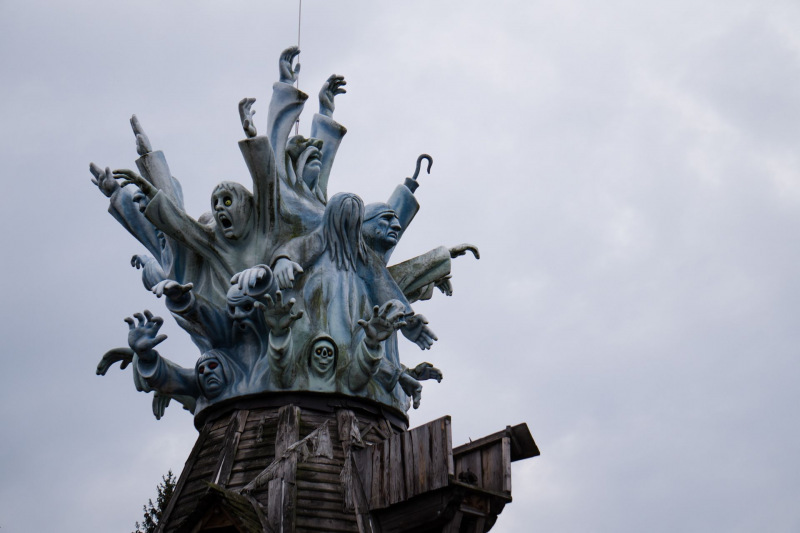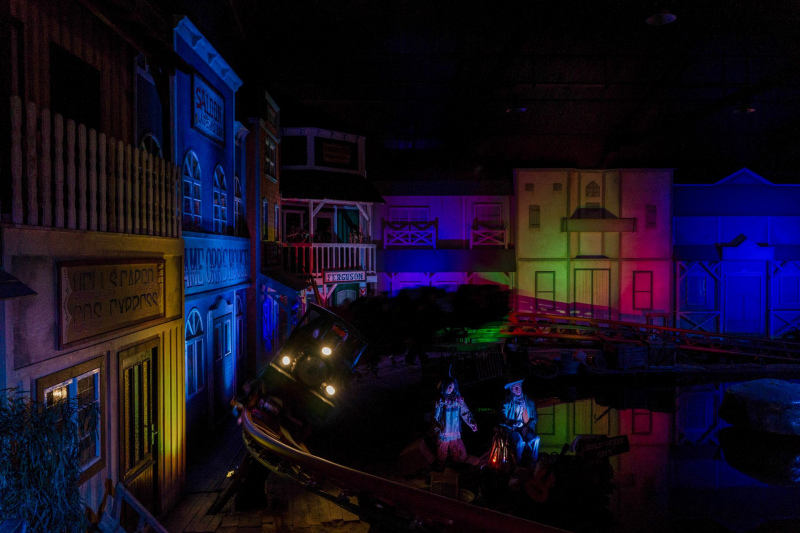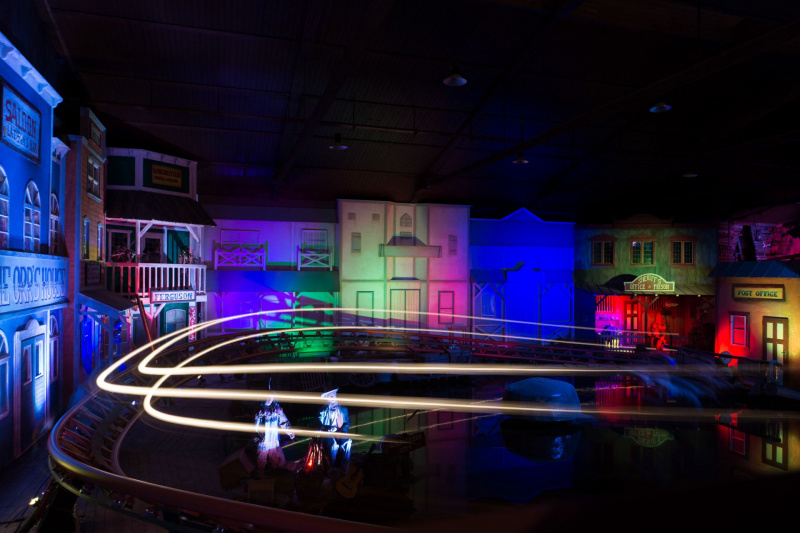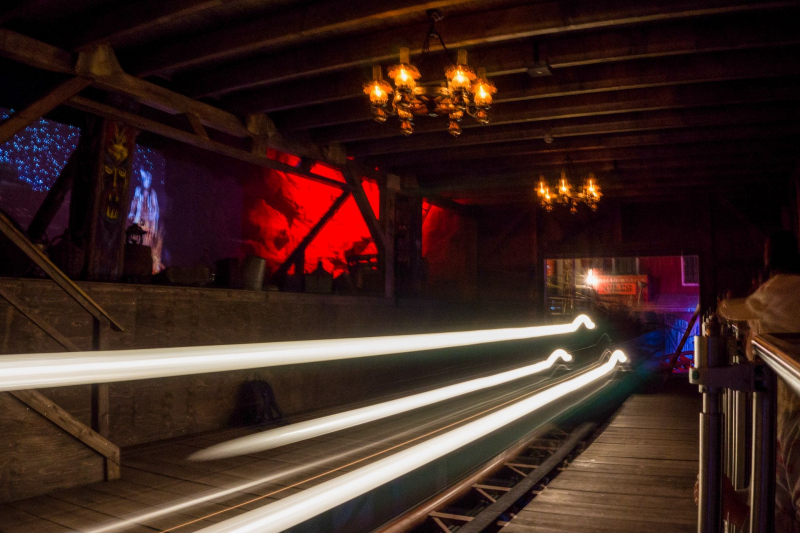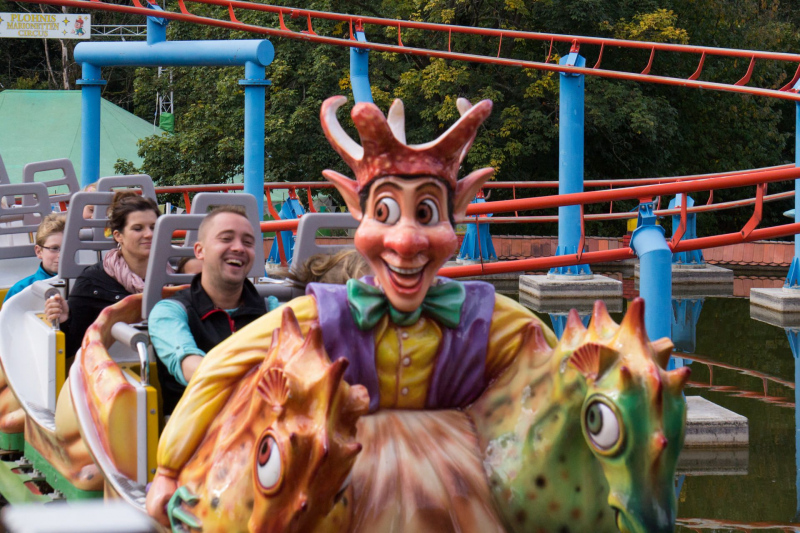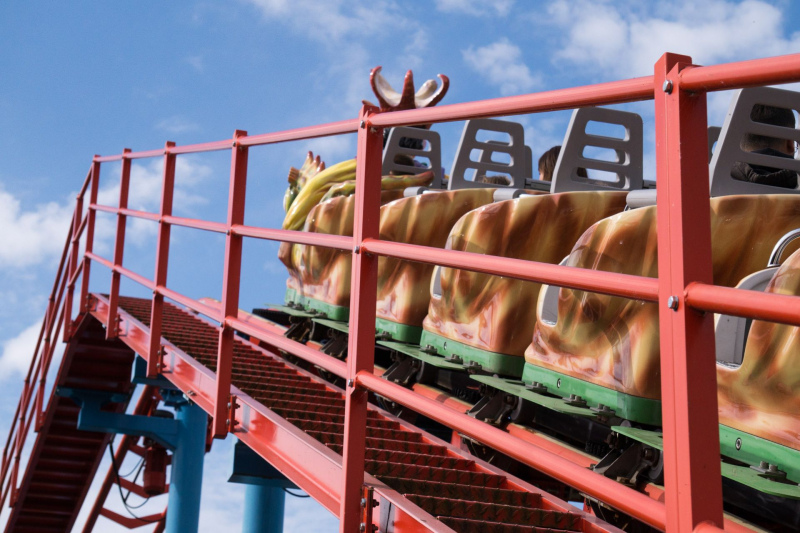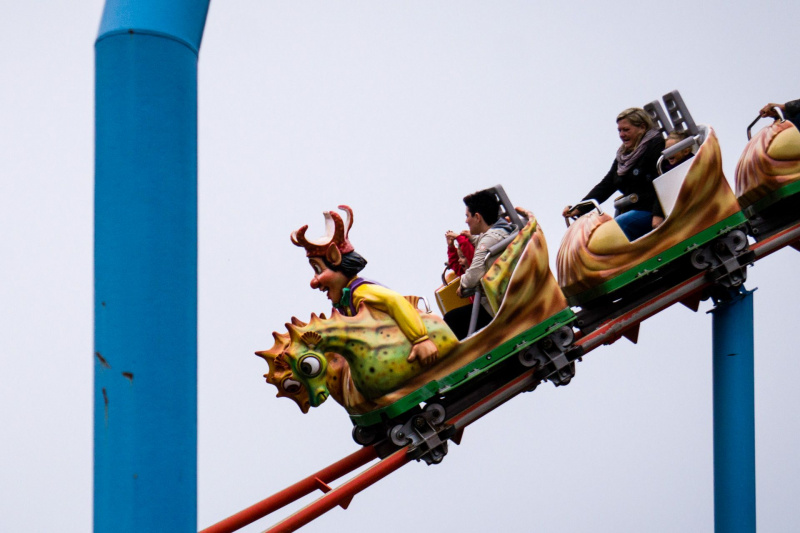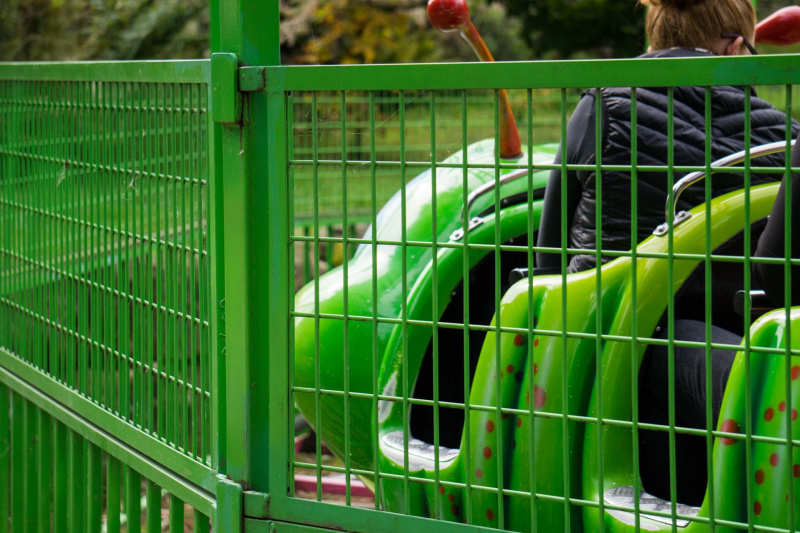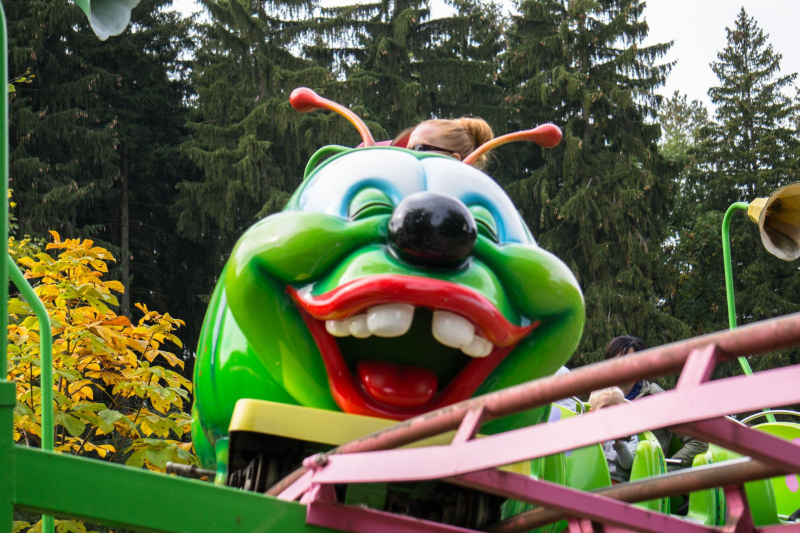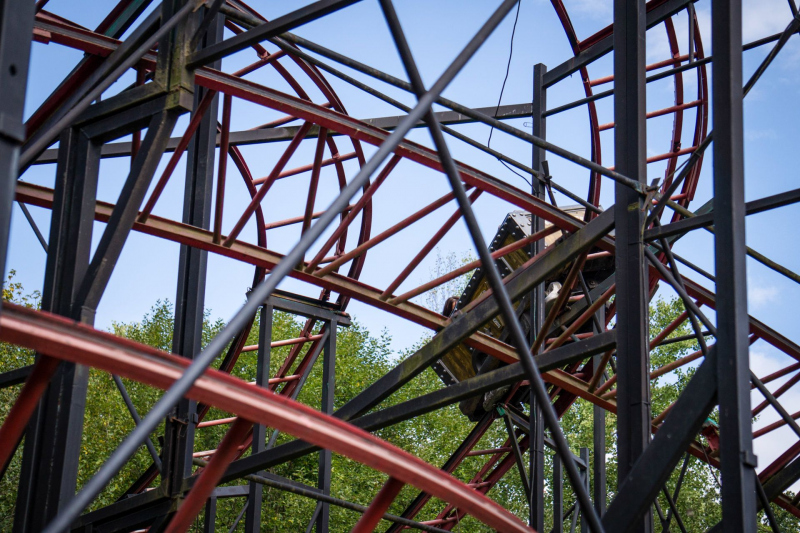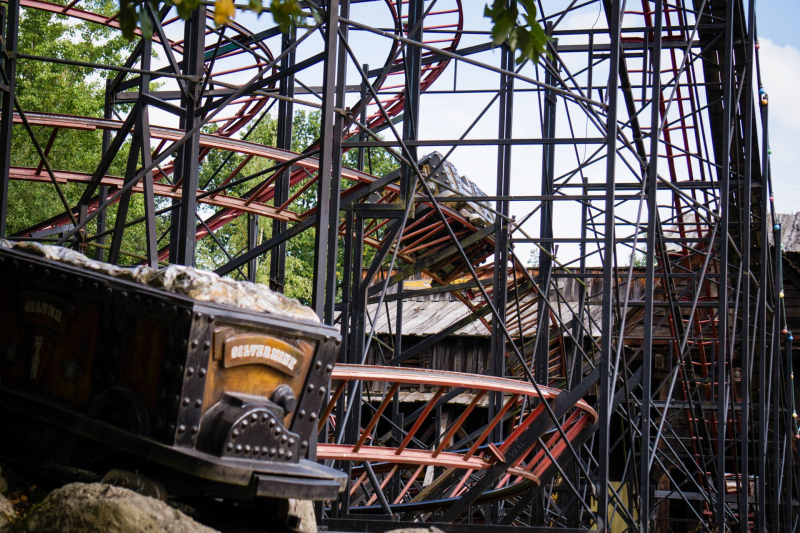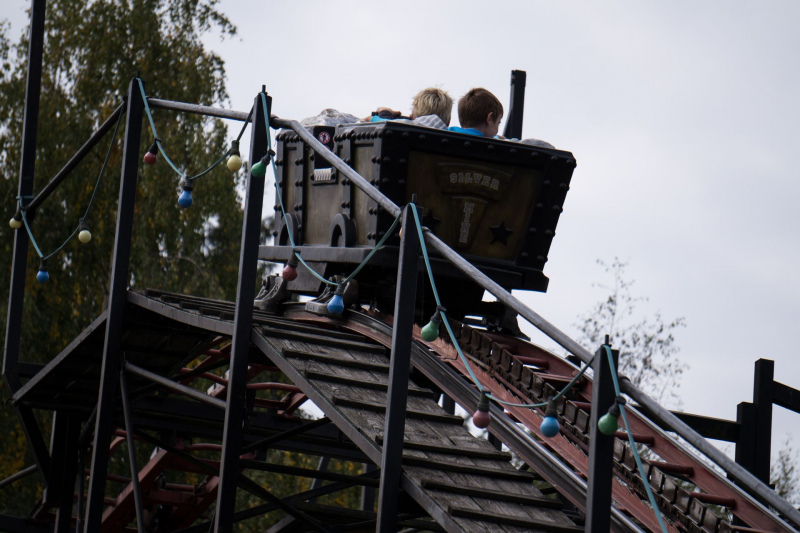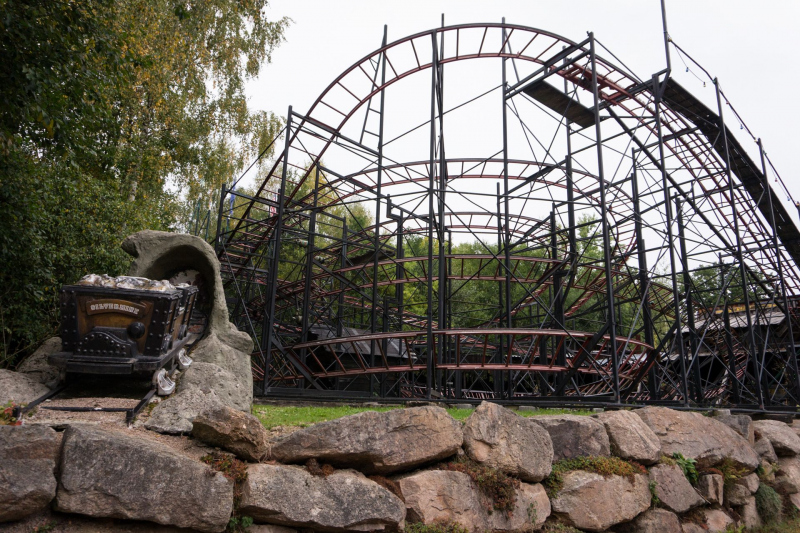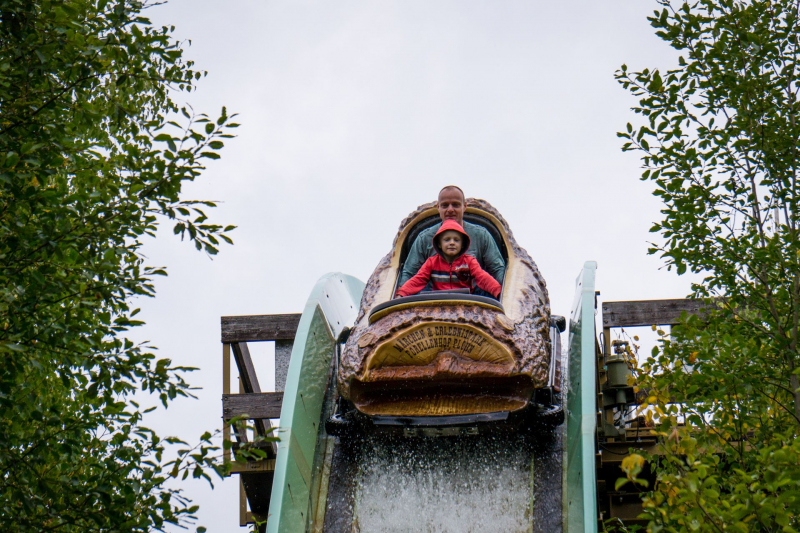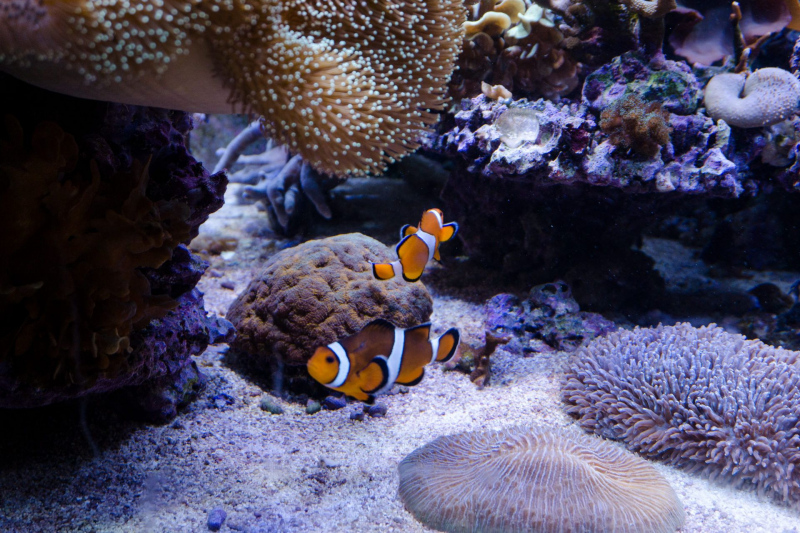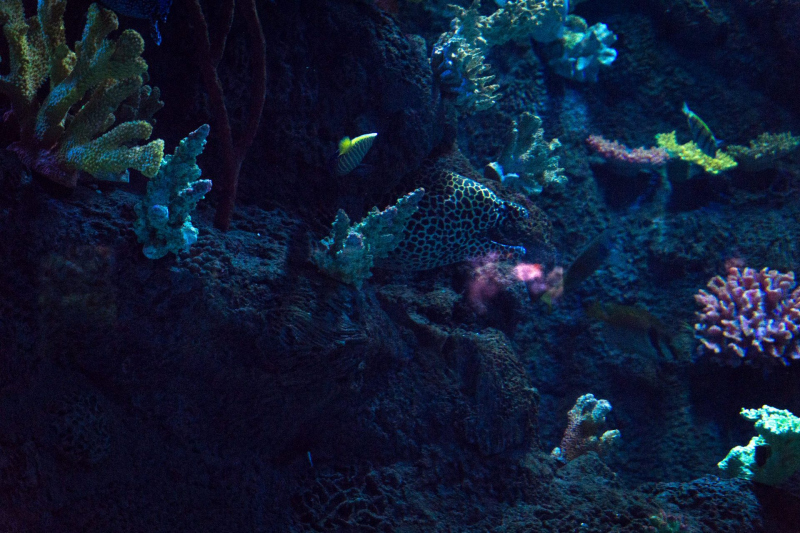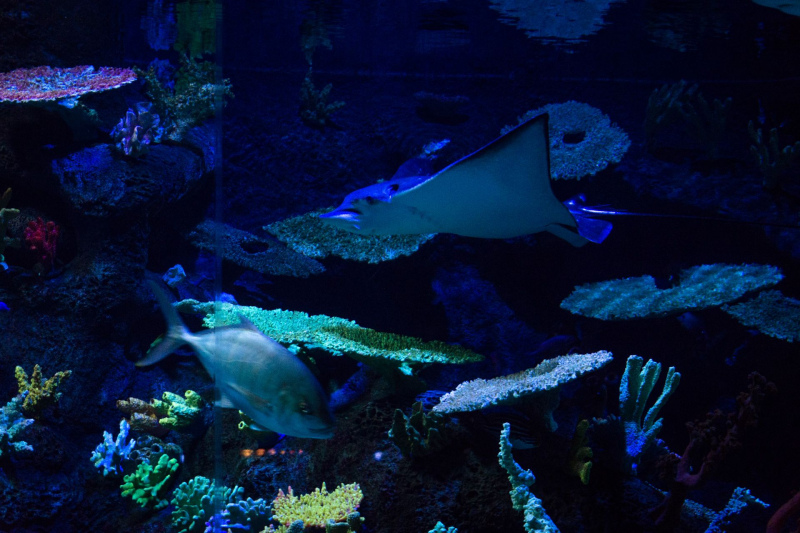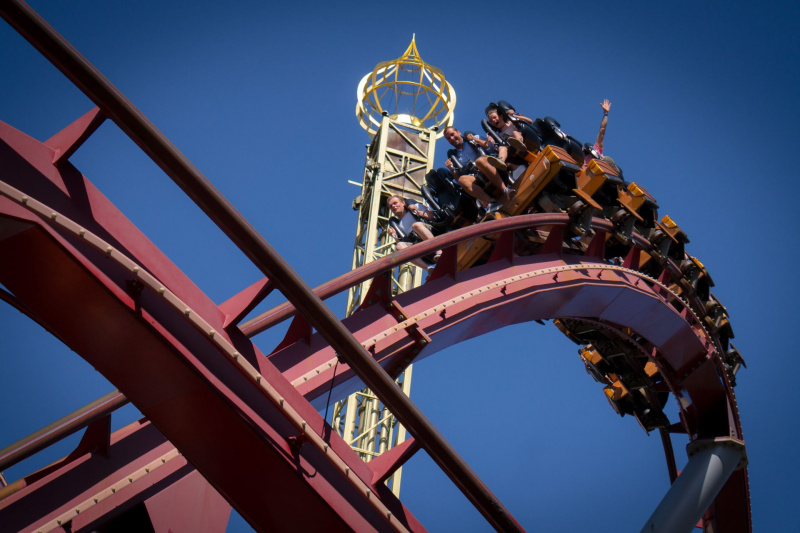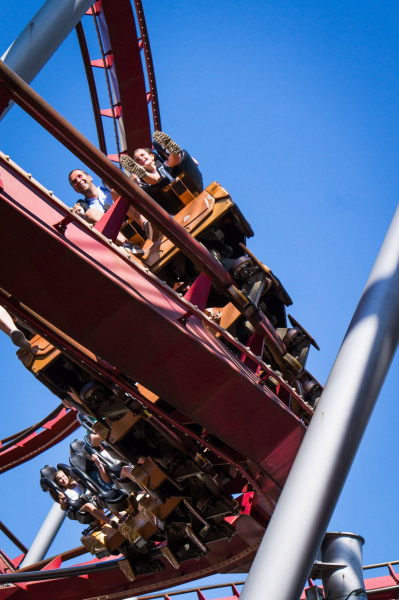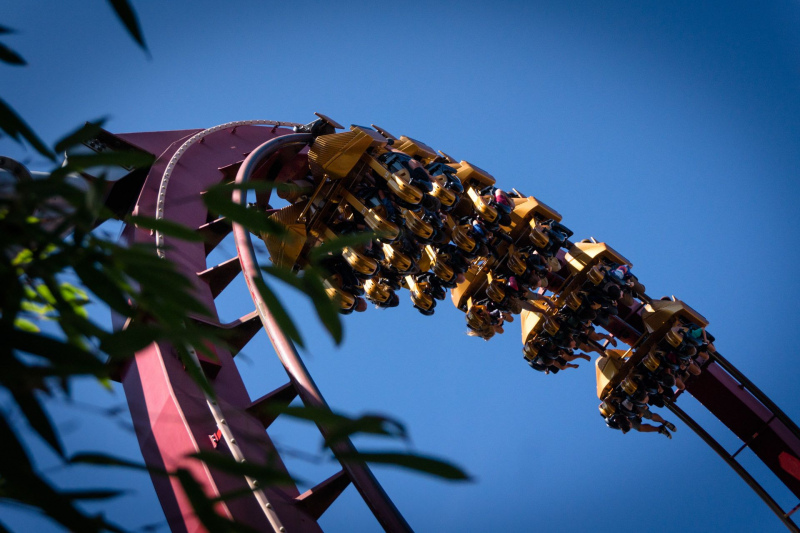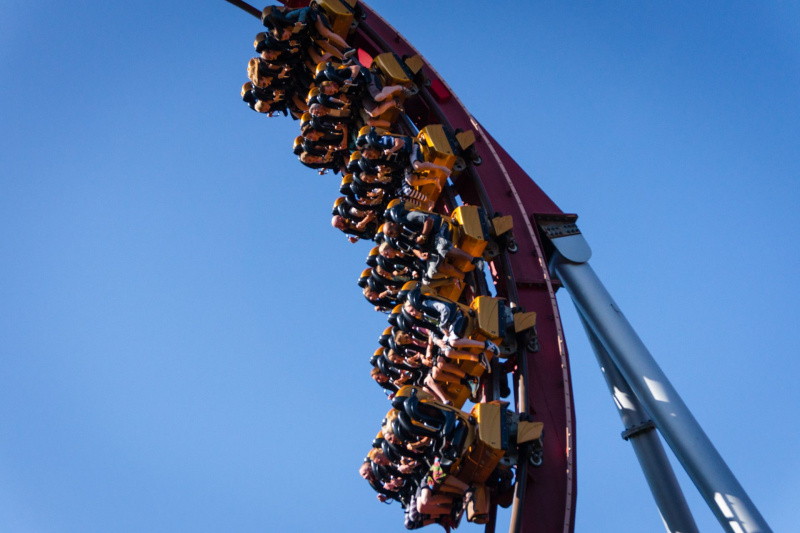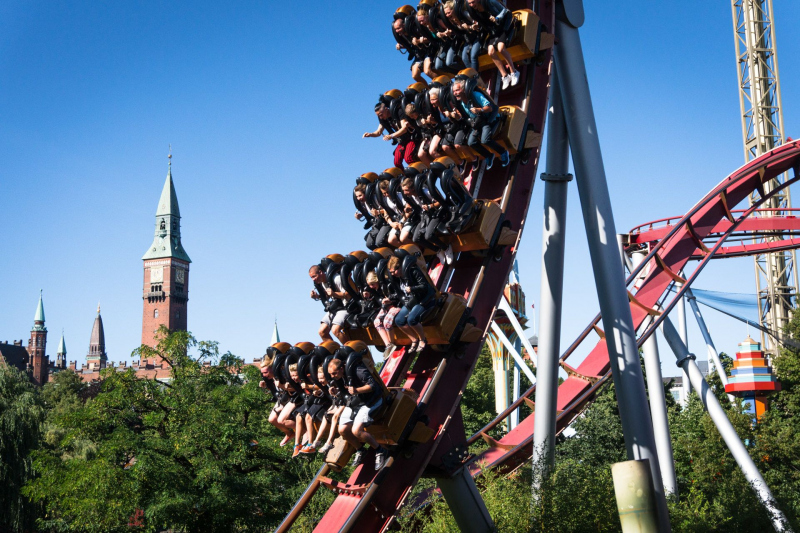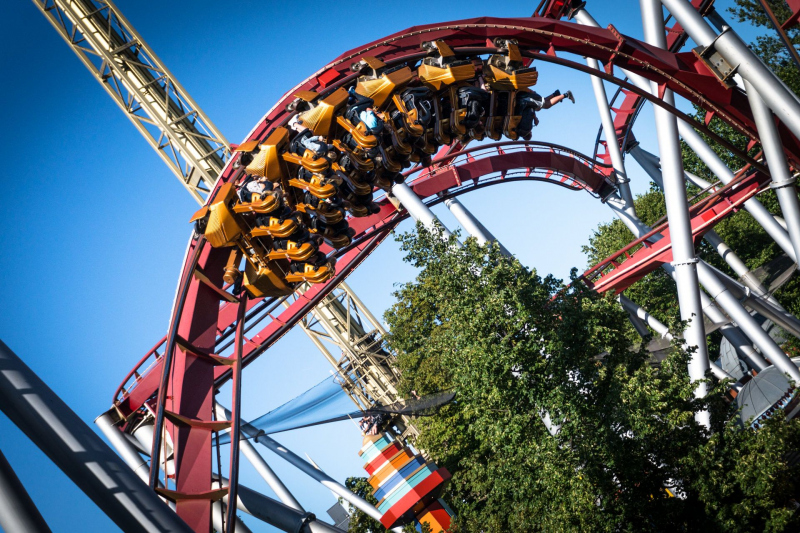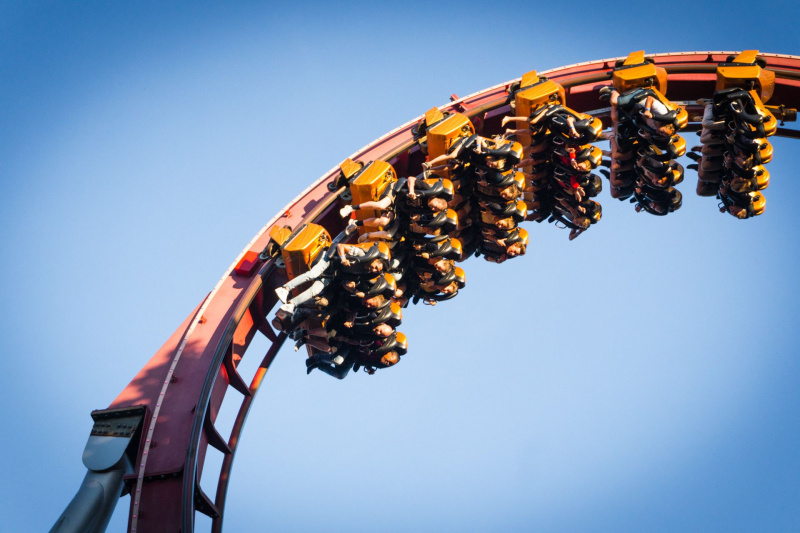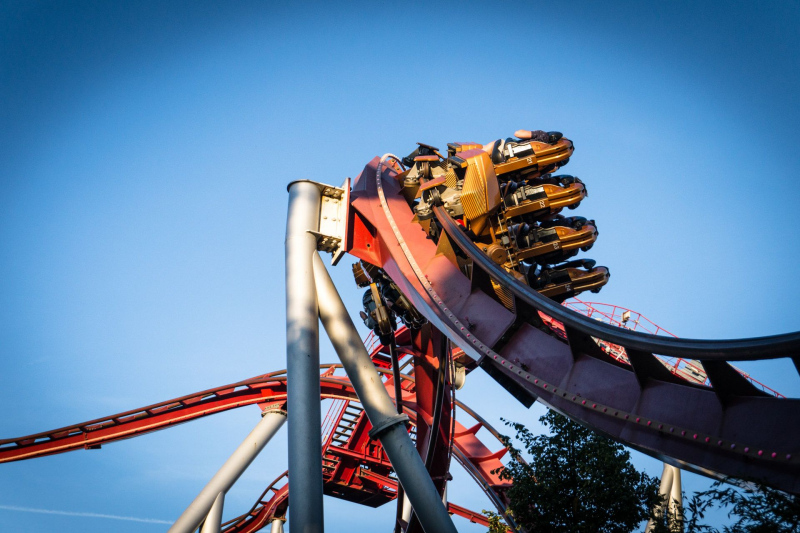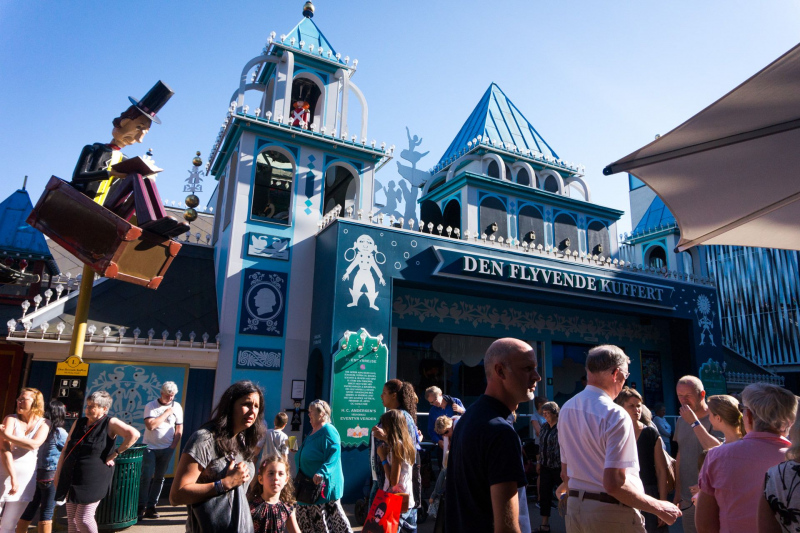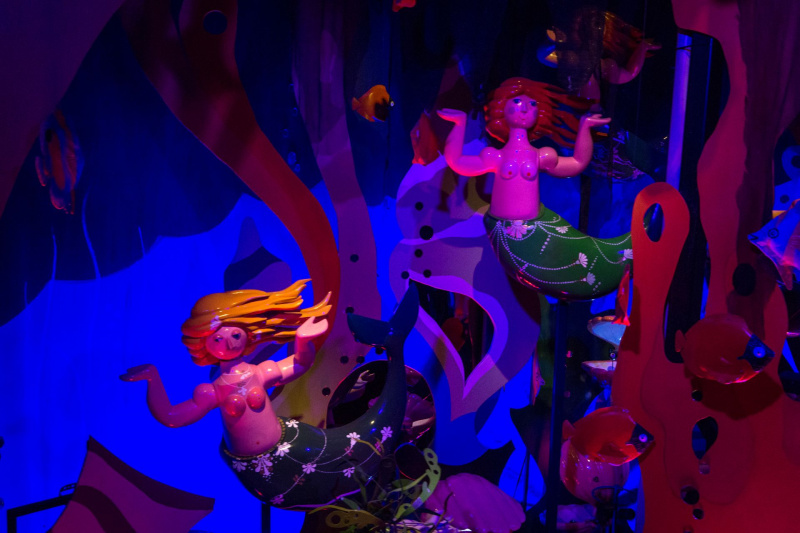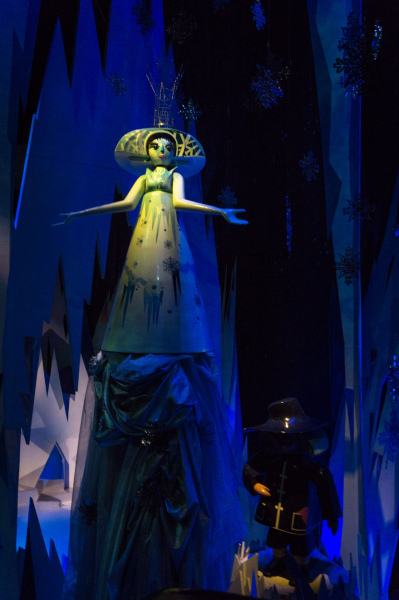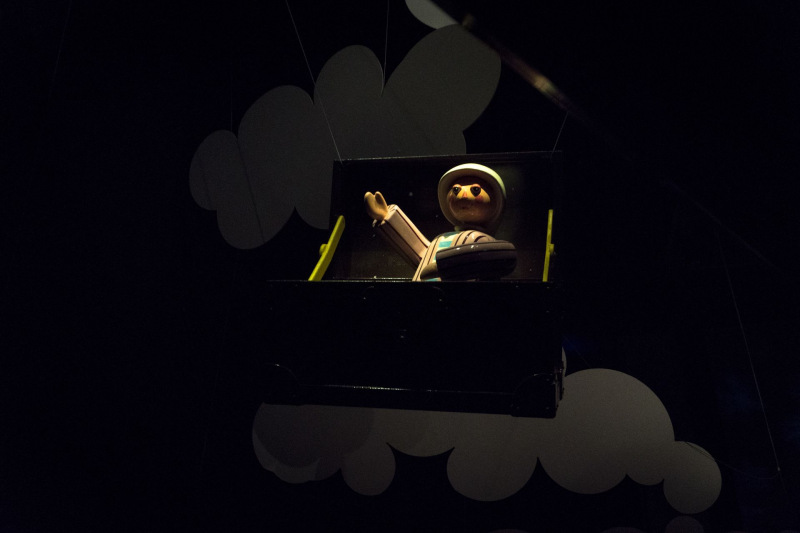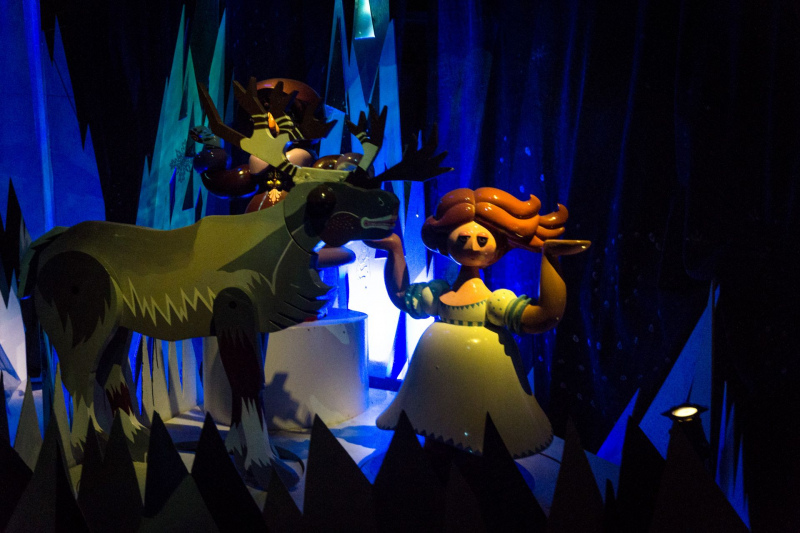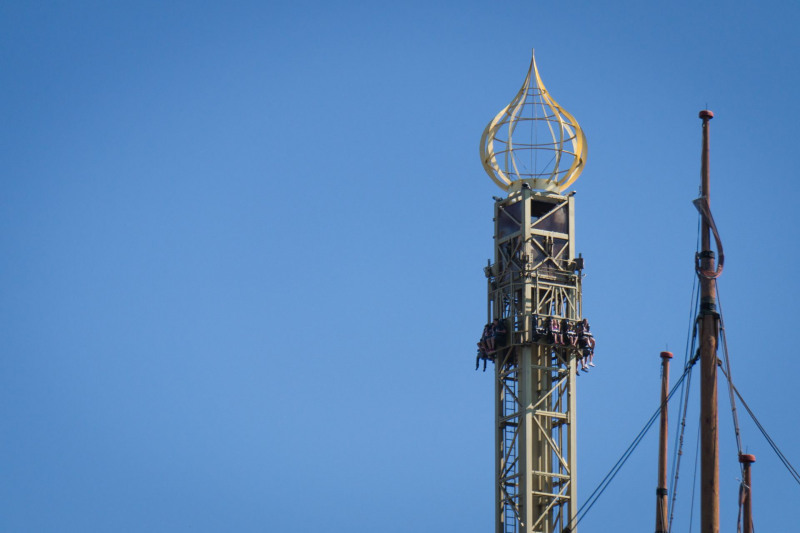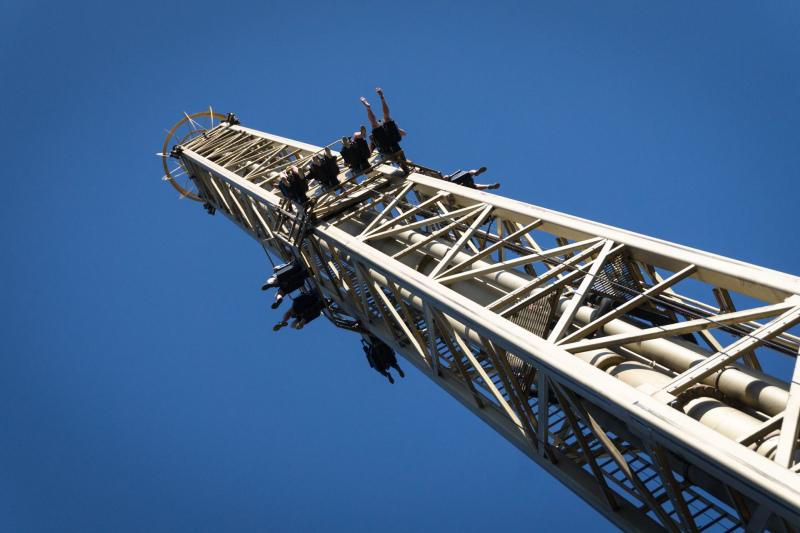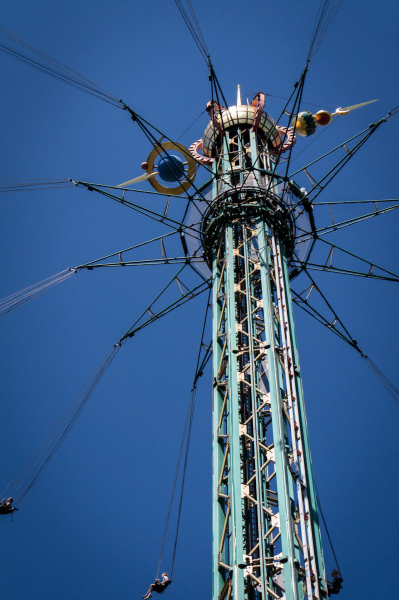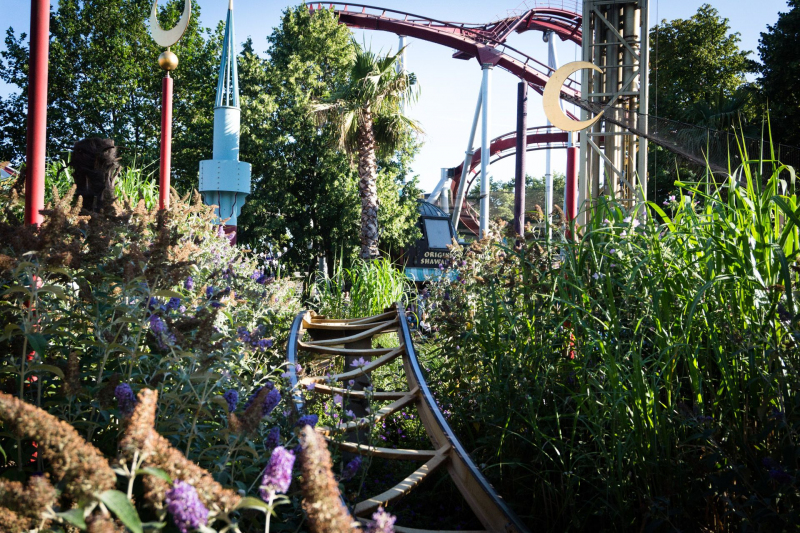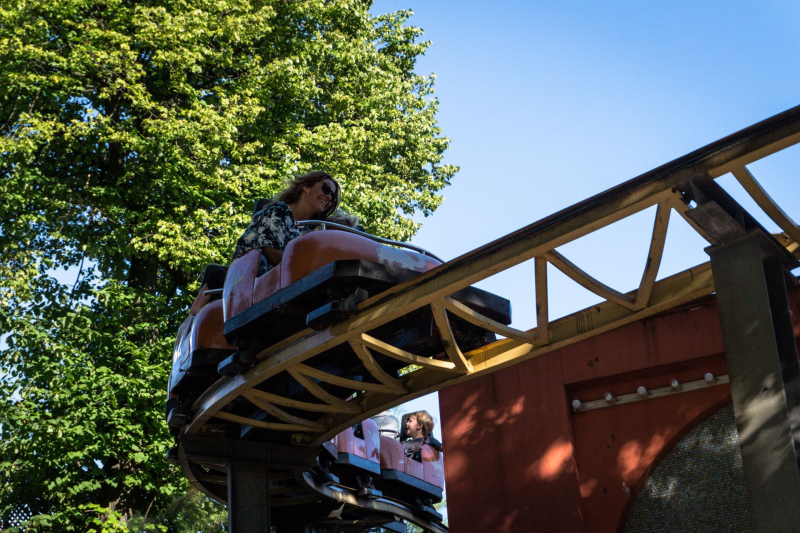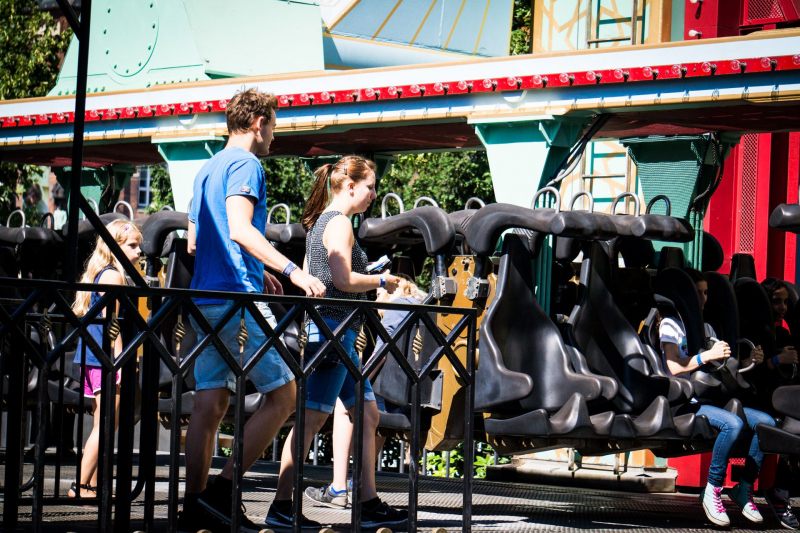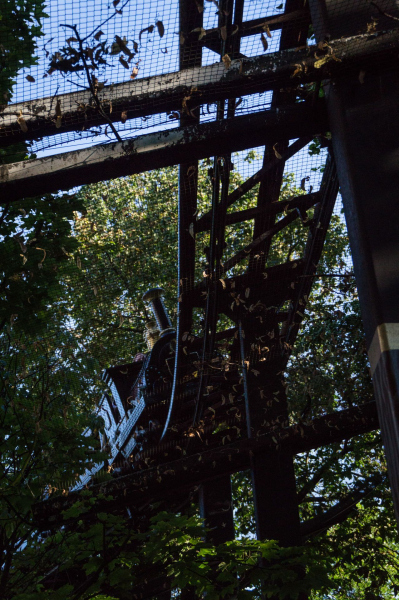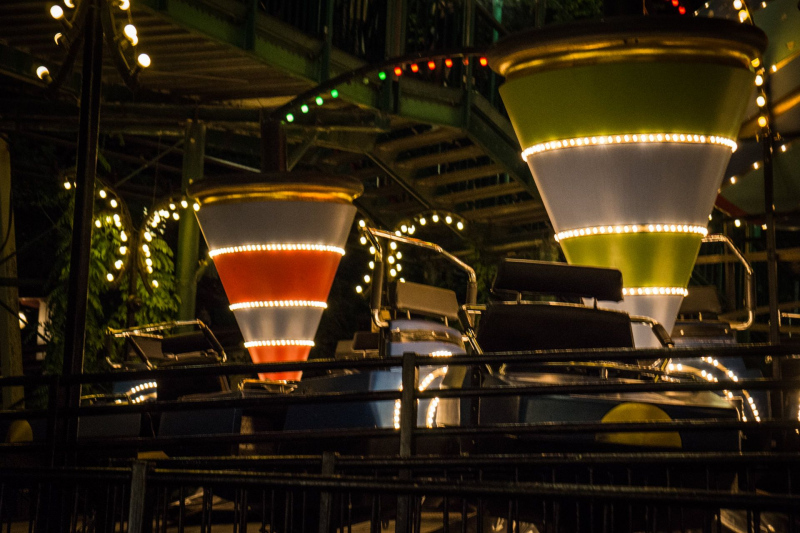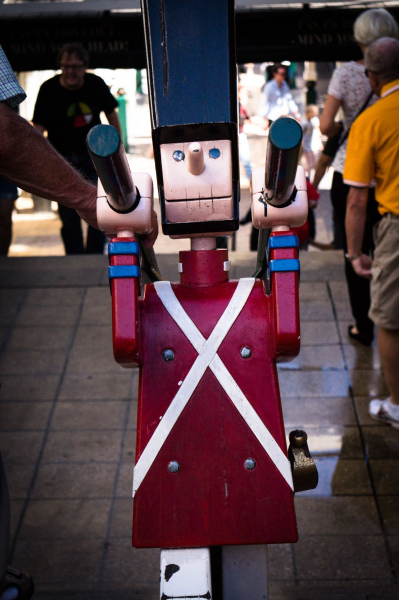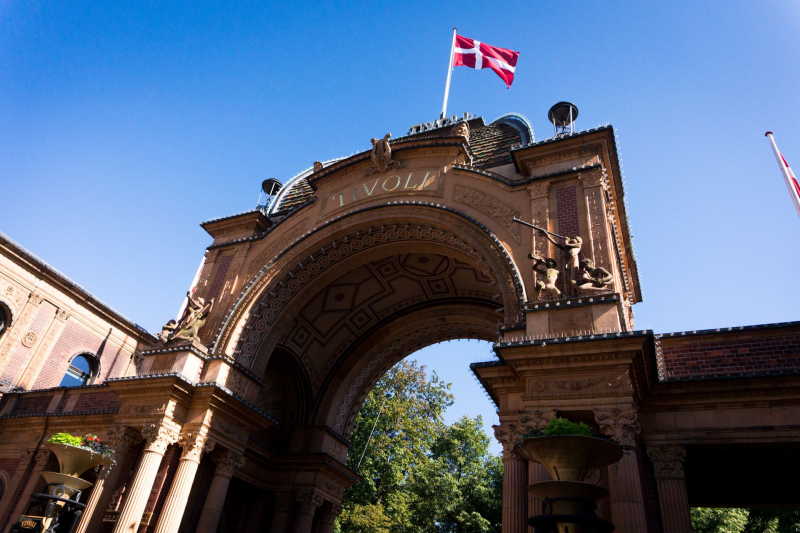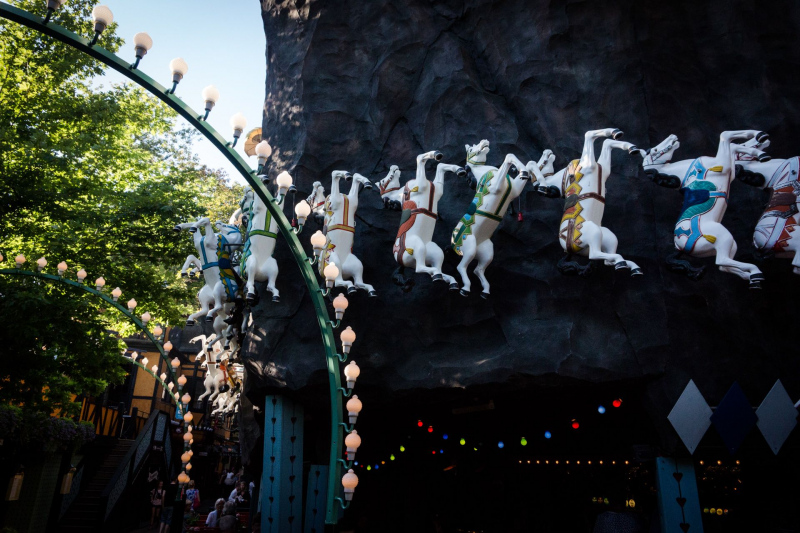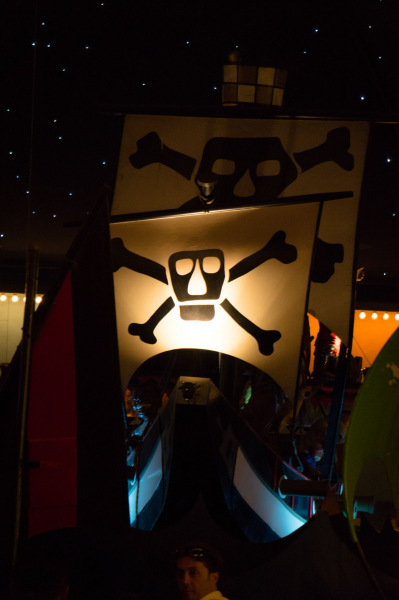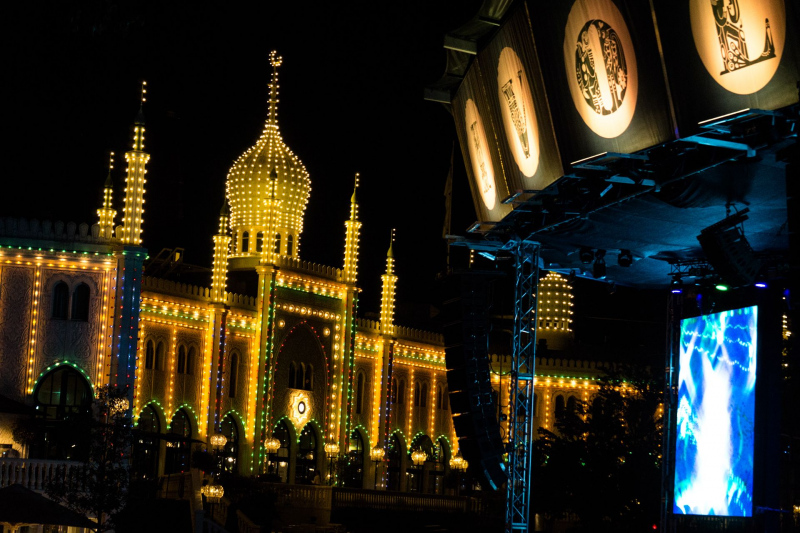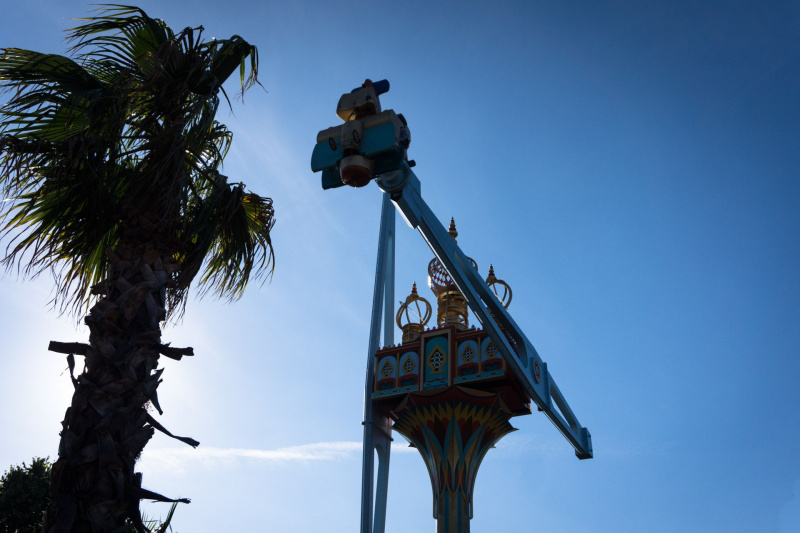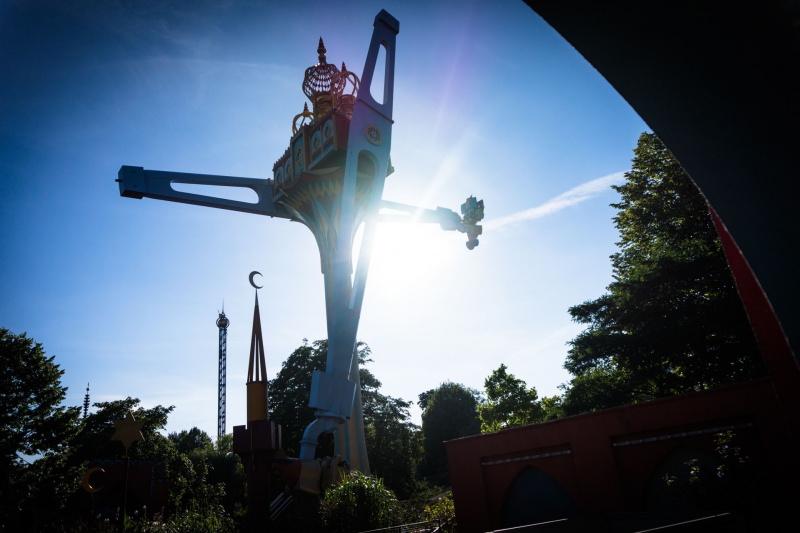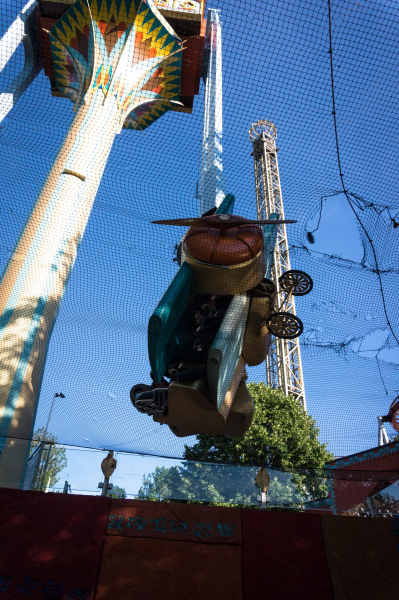Preface
No other amusement park made it so easy this year to visit the park as easy as Efteling. In order to promote his new roller coaster Baron 1898, the park gave me, as many other people, a free ticket out of the blue. Therefore, in the middle of October – shortly before the ticket expired – on a very rainy day, I took a trip to the Dutch village of Kaatsheuvel.
Efteling
The Efteling amusement park originated as a fairytale forest in 1952, but originally as a nature park in the 1930s, where a total of 10 fairy tales were told. Under the direction of the artist Anton Pieck, after whom the central square with a few smaller carousels in the Marerijk area is named, the fairy tale forest grew steadily and – unlike most other theme parks – never lost its importance. Beside the talking tree Sprookjesboom, which tells the children the fairy tales of Sprookjesbos in Dutch, you will find some bizarre and very interesting things, such as the Indian water lilies or the flying fakir. Especially with smaller children you can easily spend most of the time in the park in this area.
Droomvlucht
However, the most popular and most visited attraction in the Efteling since 1993 has been the Droomvlucht dark ride, which takes you past larger scenes of fairies, elves, trolls and other fairy-tale creatures in suspended gondolas. Although the dream flight, as the English name suggests, could hardly be more cheesy and superimposed, the ride through the dream scenes is definitely fun and the descent taking place in a 1080° helix is truly unusual.
Villa Volta
Next to the Ravelijn show, for which translations are available, there is the prototype of all modern Mad House attractions, the Villa Volta. The story of the Bokkenrijders, a band of robbers from the 18th century, is presented. Hugo van den Loosche Duynen is the aged landlord of the villa, who robbed a deserted, but richly stocked abbey with his gang and was cursed by a suddenly appearing woman and since then cannot find his peace anywhere. Only a person with a clear conscience can release his spell, which is why Hugo invited volunteers to his house.
A Mad House is a ride in which a gondola, with two rows opposite each other, in a rotating drum is swivelled about 30° to both sides. The rotating, highly decorated drum gives the impression of turning upside down in a room, the pivoting of the passenger carrier underlines this by the generated accelerations. The event is accompanied by suitable music and lighting, and if necessary by various other effects. The Villa Volta is not only the pioneer of this type of attraction, but also one of its best examples.
Volk van Laaf
In the village of the people of Laaf you can watch the Laaf during their daily life or take a monorail tour through the colonnades of the houses. The people of Laaf are reminiscent of Holle Bolle Gijs, who can be found throughout the park. These are talking garbage cans that say “paper here!” and encourage the little guests of the park to throw their garbage into the gullets of the never-full inhabitants of the park.
Monsieur Cannibale
Monsieur Cannibale also likes to eat one with pleasure, although it is only a teacup ride in which you sit in some bigger cooking pots instead of cups. The ride is not so interesting because of the heavy to turn gondolas, but the catchy tune of the song of the same name by Sacha Distel certainly contributes to it.
Carnaval Festival
The best you can do in the Reizenrijk is to travel, therefore a ride in the cars of the Carnaval Festival dark ride should not be missed. Accompanied by a merciless catchy tune, you accompany the jester Jokie on his always cheerful journey around the world, whereby the clichés of the corresponding countries were excellently staged. Carnaval Festival does not need to shy from the comparison with Disneyland Parks’ role model It’s a small World, as the ride offers everything a good dark ride needs to offer and in my opinion is even a bit better, as it is much less annoying.
Vogel Rok
Located next door is the dark roller coaster Vogel Rok, which immerses you in the world of the stories of 1001 Nights, at least in the stories of Sindbad the Seafarer. After the train has left the station it passes a short gradient within a right turn, whereupon the lifthill of the ride follows. Accompanied by laser effects we climb to the top of the lift and then immediately enter the main drop of the ride. With a slope of 55°, the train now races towards the ground in a left-hand bend. The height difference of 21m results in a speed of 67 km/h, which is kept constant in a very wide left turn close to the ground. Shortly thereafter the train shoots up and approaches the ground again in a slightly smaller radius. In the following valley we change direction. A curvy hill, past one of the name-giving birds, later we pass through an uphill helix, at the end of which we are eaten by a snake. Then, we pass a block brake before racing towards the ground in a left turn. The track then increases in height before the radius of the curve narrows down into a downward helix. The train now moves off the ground one last time and dives into a tunnel of lights. After that the brakes are reached and immediately after another right turn there is the station, which is usually approached with the loud music of the onboard sound system.
Vogel Rok is a great roller coaster of the type MK-900 by the Dutch manufacturer Vekoma, which delivers a short but thoroughly thrilling yet always harmonious ride. It is amazing how fast you can accumulate your laps on this coaster, if you stay a while when the park is less busy.
Gondoletta and Pagode
For those who like it a little more relaxed, the boat trip Gondoletta is the perfect choice. For 20 minutes the extra long Tow-Boat Ride of the company Intamin takes you across the entire lake and it is quite big. Since this year, in addition to the obligatory feeding of birds and the resulting siege of countless water birds, you have a really great view of the roller coaster Baron 1898. A similarly interesting view is guaranteed from the observation ride Pagode, a Flying Island also from the manufacturer Intamin, which brings you to a height of 45m without any tower structure. This happens basically by an oversized lever at whose end the passenger gondola is suspended and at whose other end the oversized counterweight is located.
Halve Maen, D’Oude Tuffer and Polka Marina
The swinging ship Halve Maen, which is currently the highest ship swing in Europe, can also be classified as a relaxing ride. Next to it you will find the vintage car ride D’oude Tuffer, which allows its cars to travel the long distance with rapid pace. Equally interesting, although only due to the outwardly inclined curves, is the Polka Marina ride by Vekoma, which always makes me smile.
Python
However, the things you are interested in in the Ruigrijk area are certainly not flat rides of the area, rather the roller coasters that reign this corner of the park. The first one was the Python steel roller coaster in 1981, which carried its passengers not only through one loop, but two consecutive loops. In fact Python was the highest steel roller coaster in Europe at that time and with its four inversions the most exciting roller coaster on the continent. Just as exciting as the coaster Carolina Cyclone of the American amusement park Carowinds, which was the first roller coaster worldwide to entertain its passengers with four turn-overs a year before. Efteling was therefore thinking big even back then!
The train leaves the station on a small gradient, followed by a left turn. Shortly after the train enters the lift chain, which brings it to 29m. A small slope and another 180° left turn follow before the train races down the main shot. Then the train passes through a powerful valley and enters the first loop, whereupon the game repeats itself in a second loop. On a straight incline the train gains some height and immediately throws itself into a curve. This leads the train to the starting position of the corkscrews, into which one enters at a remarkable angle. While the carriages screw their way through the corkscrews, the world is upside down two more times. After a small hill an upward spiral follows. Immediately afterwards the braking track is reached.
Python is a great roller coaster of an older design, which doesn’t have to hide itself due to its truly intense performance, especially in the evening. After the original Arrow trains, as well as the second train generation of the manufacturer Vekoma and trains of the manufacturer KumbaK had been used on the track, modern trains of the fourth train generation by Vekoma now enrich the the ride. Unfortunately I could not test them during the current visit, but the KumbaK trains gave a solid impression during a past visit.
Joris en de Draak
Wooden roller coasters have a long tradition in Efteling, dating back to 1991 when Pegasus, an absolutely boring and slowed down roller coaster for children, was built in the park. It was the first wooden roller coaster in the Netherlands. A year after its removal, Efteling build Joris en de Draak. This ride introduced two more wooden roller coasters of the popular manufacturer Great Coaster International (GCI) to the park. The background story is dedicated to the patron saint of the English, the dragon slaughterer Georg. The layout is divided into two tracks, Vuur and Water, both of which are duelling each other whilst showing different but somewhat balanced riding characteristics.
Both sides start parallel to each other, but a few meters apart, with a small gradient out of the station to which the lift hill is immediately added. Once at the top, both sides make an S-curve and a turn mirror-inverted to each other, so that the sides meet in the middle and thus deliver a race during the first drop. The trains then shoot through the first valley, which is immediately followed by a triple up, i.e. a triple combination of hills that always leads upwards. In the following right turn the sides lose each other.
With a double down, Water is showing its wild side right at the beginning of its independence. In a bumpy curve you fight your way to the right side of the course to cross more hills along the lake. In the same manner the train now makes a turn to the left.
Meanwhile Vuur also passes under its opponent in a double-down. In a flattened right bend you cross the truss of the lift hill whereupon a drop takes place immediately above the sidewalk. With a short look at the Vliegende Hollander a left turn is initiated. Over several hills one makes one’s way over the lake, whereby these are not so frequently present as on Water. A smooth right curve, which serves as a turn, follows. Thereupon both sides run next to each other again.
After a short straigth section, a smaller slope follows, to which a rather wild combination of right-left curves is attached, whereby both sides can show track sections inclined to the wrong direction. Soon the finish is reached and the winner of the race will be announced at the brake track. Afterwards you pass through the maintenance house and two left turns to the respective station, where you enter under fanfare or loud booing.
Joris en de Draak offers two good wooden roller coasters, but the rides are quite different and therefore not quite the same. Water offers the apparently wilder ride, because it is going over smaller hills and also the curves seem a little more daring, while Vuur is more careful with its gradients and therefore a little more efficient to tear his passengers back and forth. I can hardly explain why I preferred Water during my last visit in Efteling, as it was Vuur who convinced me more this time.
Vliegende Hollander
On the other side of the lake there is the Vliegende Hollander, a water roller coaster with a moving history. By this I don’t mean the problematic manufacturing process of the installation, where even another company was called in to solve the initial problems, but the story of Willem van der Decken, the captain of the Dutchman, a ship of the United East India Company. Due to his greed, the captain is more and more subject to piracy and even storms and holidays, when it was forbidden to set sail, didn’t stop him. “I will sail, storm or not, Easter or not. I will sail, even until Judgement Day,” said Willem, drawing a curse on him. Damned for eternity to sail the seven seas of the world, the Flying Dutchman races across the sea as a ghost ship with his black hull and burning sails.
The journey begins in a 17th century seaport. After leaving the station you can see in the first scene how your own boat sets sail. Fog is coming up and is getting denser, only a lamp at the bow gives some light. A storm comes up and with it the Flying Dutchman shows itself to the passengers. Through the hull one enters the interior of the ghost ship. A surprising drop follows and thereupon a rise, in which one is held immediately by a brake. Here Willem van der Decken shows his true face, whereupon the lift chain grabs and brings the boat to a height of about 22m. Immediately a steep turn follows out of the building towards the ground and through a fog-flooded building. A camelback is attached and shortly afterwards a horseshoe, i.e. an elevated turn, which you pass through with a considerable cross slope. A short ascent leads to a block brake. This is followed by a small drop and a long bend, which then turns into a shot into the water basin. After the watering, the boat is transported back to the station by circulating chains.
The Vliegende Hollander offers an almost perfect mix of a dark ride and a water roller coaster, which was skillfully staged. The part in front of the lift hill is so atmospheric that you could almost skip the ending. But this one also does a good job, even if the finish could be wetter.
Baron 1898
On a highly atmospheric path, which also provides some nice insights into the roller coaster part of the water coaster, you can walk to this year’s novelty, the Dive Coaster Baron 1898. Even from far away, the appearance is convincing by its industrial charm and the framework structure, which carries the lift, as well as the first drop. The Rijksmijn winding tower transports the miners down into the shaft, where they are to mine as much gold as possible on behalf of Baron Hooghmoed. But the Witte Wieven, white women in Dutch folklore, who watch over the gold, want to prevent this. Gustave Hooghmoed doesn’t listen to the warning, so he urges the miners to climb into the mine. With a fearless “Glück Auf!” he says goodbye to his workers.
After boarding the train and lowering of the floor, the train starts moving towards the next room. In a musical way the Witte Wieven reappears. This time, it is not just a simple warning and they announce the sabotage of the descent, as pride comes before the fall. At a fast pace we climb the steep lift, which brings us to the starting height of 30m. Arrived at the top, a small section continues straight ahead whereupon we are pushed over the edge. Now we are held in this position for a few seconds until a bell rings and releases the train. From here we descend the vertical drop into a fog-flooded tunnel. The 37.5m difference in altitude produce a speed of about 90 km/h. At top speed we now enter the first inversion, an Immelmann with a relatively late rotation around its own axis. With a lot of power we pass through the following valley before we turn upside down in a Zero-G Roll. A short straight section later the train increases in height in a helix and immediately decreases in a small drop, whereby the transition takes place a little rough. After another hill we take a right turn, which releases us into the braking track. This is followed by the return to the station.
The exit from the station is via a gallery, which leads into a narrow corridor and, after a long staircase, releases the miner from the building. Funnily enough, an employee handed a CD with the Baron 1898 remix by DJ Hardwell as a personal souvenir. On the way back home the CD was heard almost continuously, although the connection to the Baron 1898 was not really clear. It’s just a nice song, which serves ideally as background music and an even nicer little gift from the amusement park.
The Baron 1898 is without exaggeration the best designed dive coaster in the world. Although it is only a compact version of this type of roller coaster, the ride in combination with the lush design and the worth seeing implementation of the storyline is a truly first-class roller coaster. The used baggage system, in connection with the tickets for the two shafts and the corresponding rows, works very well, so that from my point of view there is hardly any potential for improvement.
Piraña
One of the first major attractions of the amusement park is the Rapid River Piraña, opened in 1983, which was also the first of its kind in Europe. The ride in the round-boats along the concrete canal, which has some rapids and other elements, is good and can easily get you wet. There is also a possibility to get the passangers wet from the outside of the ride that can be used free of charge, but which can soak you with a bit of bad luck.
Spookslot
The Spookslot is one of the most famous and oldest attractions of the Efteling amusement park, although you should not expect a classic ghost train when you enter the haunted castle, although the outward appearance and the design of the queue make you expect a dark ride. Instead, you will find yourself in a larger room with several standing rows and watch a show worth seeing with countless mechanical figures.
Panda Droom
The ancient 3D film Panda Vision at the 4D cinema Panda Droom in the immediate vicinity is not quite as worth seeing. Anyhow, the special effects are rather special and should not be missed. In contrast to the many other venues in which this film was shown, the film was created especially for the Efteling in cooperation with the WWF, which is why animal welfare is far more important here through a preshow and further information options in the exit area.
Bob
In 1984 a truly new roller coaster concept from Intamin opened in the USA and, as so often the case, found its way to the Efteling a year later. The idea of a roller coaster with gondolas running free in a canal instead of on rails is not new since the flying turns of the 30’s, but the gondolas of the Swiss Bobsleigh pass through steep ascents and descents.
The ride in the Bobbaan, better known as Bob, begins on a straight out of the station. After a left turn you reach the lifthill, which brings you to a height of 20m. A steep left turn takes you downhill. The following valley is driven through with an absurd force, with the first change of direction taking place immediately. A swinging S-curve combination leads you up into the first block brake. Once again we descend in a steep left turn and get stoked by the high forces in the next valley. After a right turn, a left turn leads into the next block brake and also here the change of direction takes place in a powerful way. Also this block brake is left in the usual way. As we already have experienced before, the next valley is passed with a lot of momentum before a simple right helix leads us upwards. The car now crosses the last block brake and crashes towards the ground one last time, however this time in a right turn. A last change of direction, but not so brute, follows. After this turn the brakes follow and shortly after we reach the station.
Bob is a unique roller coaster, at least in Europe, although the American models now also have an exotic status. In comparison to the bobsleigh runs of the manufacturer Mack, which are better known in this country, the Swiss Bob can distinguish itself above all through its smooth running and the more adventurous course with its brilliant dynamics. The ride is simply fun and produces a permanent grin in my face which is why I always like getting on Bob again and again.
Fata Morgana
In a similar way I am very satisfied with the dark ride Fata Morgana, which convinces or better said overwhelms me with its oriental design. Although the ride was put into operation in 1986, it seems very modern and timeless with its human-like mechanical figures. The individual scenes are well equipped and very detailed, whereby the journey does not become boring even after several times. In addition, there is a continuous storyline with single moments of tension.
Aquanura
Every evening Aquanura, one of the biggest water shows in the world, takes place directly at the lake. It picks up the songs and rides that were experienced during the day and processes them with water, light and fire effects. During the day this is quite impressive, but at night it is definitely better.
Pictures Efteling
Conclusion Efteling
Efteling has always been a great amusement park, but it’s funny how often I forget about it, otherwise I would have visited the park more often. The park has so much to offer and with Baron 1898 and Aquanura even more, which is why I would like to call Efteling the best amusement park in Europe and not just because the park gave me the admission and a CD out of the blue. Despite the terrible weather, the park managed to entertain us very well, although our ride in the first row of Baron 1898 was by no means pleasant. With this year’s novelty everything has been done right, so I am looking forward to future projects from the park.
What are your thoughts about the Dive Coaster Baron 1898 and the theme park Efteling? Just write it in the comment box below the report or visit our social media channels:

